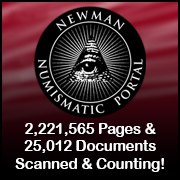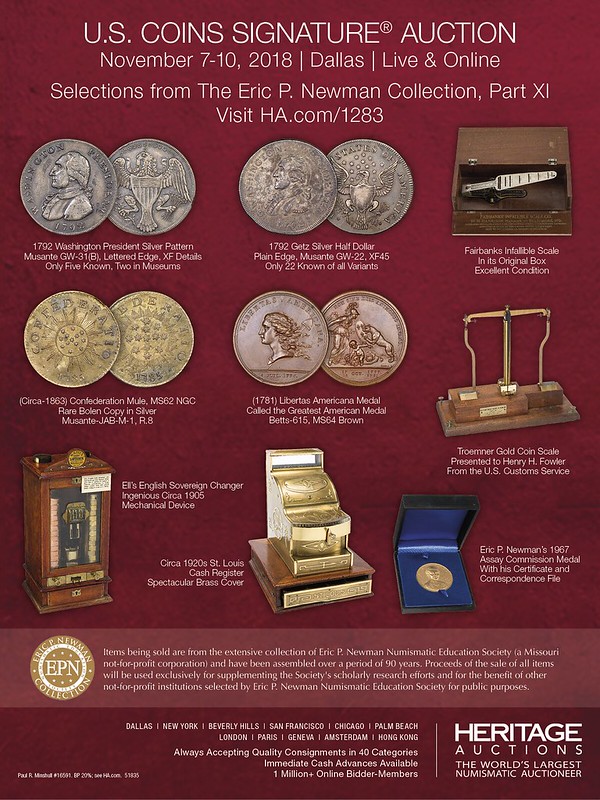
About UsThe Numismatic Bibliomania Society is a non-profit association devoted to the study and enjoyment of numismatic literature. For more information please see our web site at coinbooks.org SubscriptionsThose wishing to become new E-Sylum subscribers (or wishing to Unsubscribe) can go to the following web page link MembershipThere is a membership application available on the web site Membership Application To join, print the application and return it with your check to the address printed on the application. Print/Digital membership is $40 to addresses in the U.S., and $60 elsewhere. A digital-only membership is available for $25. For those without web access, write to: Terry White, Treasurer AsylumFor Asylum mailing address changes and other membership questions, contact Terry at this email address: terrywhite5475@yahoo.com SubmissionsTo submit items for publication in The E-Sylum, write to the Editor at this address: whomren@gmail.com BUY THE BOOK BEFORE THE COINSale Calendar |
- WAYNE'S WORDS: THE E-SYLUM OCTOBER 21, 2018
- HAPPY BIRTHDAY, NBS!
- KOLBE & FANNING EPHEMERA SALE 4 CLOSES OCTOBER 24, 2018
- ERIC P. NEWMAN NUMISMATIC LIBRARY AND ARCHIVES
- MINT DIRECTOR JAMES P. KIMBALL ARCHIVE
- NEW BOOK: PUNCHMARKED COINS OF RAJASTHAN
- NEW BOOK: RESEARCHES IN EPIGRAPHY AND NUMISMATICS
- EL SITIO NO. 28 PUBLISHED
- NEW PERIODICAL: KOINON
- SPMC NEWS & NOTES
- CAL WILSON (1944-2018)
- CAL WILSON'S NUMISMATIC AUTOBIOGRAPHY
- DEL BLAND (1933-2018)
- HOLLAND WALLACE (1940-2018)
- STEVE RATLIFF (1947-2018)
- J.T. STANTON (1952-2018)
- NEWMAN PORTAL ADDS DOUBLED DIE QUARTERS VIDEOS
- CHEMICAL ANALYSIS OF EARLY U. S. SILVER COINS, PART 2
- 2018 BOSTON MCA-MHS MEDALS CONFERENCE REMINDER
- NOTES FROM E-SYLUM READERS: OCTOBER 21, 2018
- MORE ON PLASTER CASTS IN COIN PHOTOGRAPHY
- LE MéDAILLIER MEDAL SHIELD
- MORE ON MAXIMILIAN FYSCHER WWI PLAQUE
- VOCABULARY: TYPES OF MEDALS
- LUTHER BROWN TUTHILL (1859-1930)
- PAUL HILL & CAROLINE HOLMES JOIN CNG
- HARVEY STACK'S NUMISMATIC FAMILY, PARTS 28-29
- ANS EXHIBITS MEDALLIC ART COMPANY ARCHIVES
- NUMISMATIC NUGGETS: OCTOBER 21, 2018
- APOLLO 11 COIN DESIGNER GARY COOPER
- WAYNE'S NUMISMATIC DIARY: OCTOBER 21, 2018
- KING OFFA'S ARABIC COIN
- THE ANA JOHN F. KENNEDY COLLECTION
- THE 1887 INTERNATIONAL MEDICAL CONGRESS MEDAL
- COIN CARVER ROMAN BUTIN'S NEW DESIGN
- LOOSE CHANGE: OCTOBER 21, 2018
- FEATURED WEB SITE: FORUM ANCIENT COINS
Click here to access the complete archive a
Click here to unsubscribe (scroll down)
To comment or submit articles, reply to whomren@gmail.com
Content presented in The E-Sylum is not necessarily researched or independently fact-checked, and views expressed do not necessarily represent those of the Numismatic Bibliomania Society.
WAYNE'S WORDS: THE E-SYLUM OCTOBER 21, 2018
 New subscribers this week include: Chris Lavoie, and David Gibbs. Welcome aboard! We now have 5,777 subscribers.
New subscribers this week include: Chris Lavoie, and David Gibbs. Welcome aboard! We now have 5,777 subscribers.
Thank you for reading The E-Sylum. If you enjoy it, please send me the email addresses of friends you think may enjoy it as well and I'll send them a subscription (but let me know if they are located in the European Union). Contact me at whomren@gmail.com anytime regarding your subscription, or questions, comments or suggestions about our content.
This week we open with NBS news, a sale reminder, a Mint Director's archive, two new books and a couple new periodicals as well. Unfortunately, we also have the loss of five fellow numismatists this week.
Other topics this week include Wilson's Numismatic Repository, doubled die quarters, the upcoming MCA-MHS medal conference in Boston, plaster casts in coin photography, the Medallic Art Company archives, the new Apollo 11 coin designs, and Roman Butin's newest coin creation.
To learn more about the only Polish coin of the 20th century struck in coin alignment, the St. Ignatius medal, Luther Tuthill, numismatician Del Bland, J.T. Stanton, Paul Hill, Caroline Holmes, the Directors Guild of America medal, King Offa's Arabic coin, and John F. Kennedy's Purple Heart, read on. Have a great week, everyone!
Wayne Homren
Editor, The E-Sylum
HAPPY BIRTHDAY, NBS!
Our organization has an important anniversary coming up. We're approaching the big Four-Zero, and contributions are being sought for a special issue of our print journal. Can you help? -Editor
 In 2019, the Numismatic Bibliomania Society will be turning 40! To celebrate, we are compiling a special anniversary edition of The Asylum where members share
their stories from its inception through the years.
In 2019, the Numismatic Bibliomania Society will be turning 40! To celebrate, we are compiling a special anniversary edition of The Asylum where members share
their stories from its inception through the years.
Please send your remembrances about live literature sales, the invasion of Louisville or Pittsburgh (among others), all of the interesting personalities our hobby attracts, and any stories involving numismatic literature and the NBS.
Photographs are especially wanted and needed!
Our deadline for submissions is April 1, 2019, but please start the wheels turning now. Send all submissions to nbsasylum@gmail.com.
We hope you will enthusiastically embrace this project that will not only be enjoyed today, but will record numismatic literature events and personalities for future bibliophiles that otherwise may be lost.
Tom Harrison, NBS President
Maria Fanning, Editor, The Asylum

THE BOOK BAZARRE
KOLBE & FANNING EPHEMERA SALE 4 CLOSES OCTOBER 24, 2018
Here's a reminder from Kolbe & Fanning about their upcoming closing date, along with a new set of sale highlights. Great stuff. -Editor
 Kolbe & Fanning Numismatic Booksellers' fourth Numismatic Ephemera Sale closes Wednesday, October 24 at 5:00PM. This mail bid sale includes 100 lots of
memorabilia, short sale catalogues, photographs, letters, brochures, leaflets, booklets: all sorts of material that doesn’t necessarily fit well in a book auction but which
is interesting nonetheless.
Kolbe & Fanning Numismatic Booksellers' fourth Numismatic Ephemera Sale closes Wednesday, October 24 at 5:00PM. This mail bid sale includes 100 lots of
memorabilia, short sale catalogues, photographs, letters, brochures, leaflets, booklets: all sorts of material that doesn’t necessarily fit well in a book auction but which
is interesting nonetheless.
E324: Plastic Coin Holders for U.S. Rarities from the Hydeman Collection, Including 1913 Nickel
E357: British Numismatic Society Announcement of the Death of John Sanford Saltus
E360: Reproduction of van Romerswael’s Painting of Two Usurers Counting Coins
E364: BEP Stereograph Depicting Paper Money Production
E368: 1839 Hand-Colored Engraving of the Second Bank of the United States
E371: Original Art Depicting a Roman Coining Press, by Ed and Kenneth Lee
E373: 1916 Profile Photograph of B. Max Mehl
E374: Three Engraved Plates Depicting Early American Coins & Medals, c. 1850
E387: Videotape of the 1999 Great Debate between Buttrey & Hodder
To read the earlier E-Sylum article, see:
KOLBE & FANNING EPHEMERA SALE NO. 4 ANNOUNCED (http://www.coinbooks.org/v21/esylum_v21n41a03.html)
ERIC P. NEWMAN NUMISMATIC LIBRARY AND ARCHIVES
Two upcoming Heritage auctions will complete the sale of the Eric P. Newman collection. The final sale will include Newman's landmark numismatic library. Here's an announcement from Kolbe & Fanning, whose David Fanning catalogued the material. -Editor
Eric P. Newman Collection Final Sales
Feature Numismatic Library and Archives
The final sales of material from the numismatic collections formed by Eric P. Newman are being sold by Heritage Auctions in November 2018. Sale X will include the final offering of important paper money, while the two catalogues comprising Sale XI will include the remaining coins, mechanical counterfeit detectors and related items, as well as the Eric P. Newman Numismatic Library. All sales are being conducted for the Eric P. Newman Numismatic Education Society.
The Eric P. Newman Numismatic Library was catalogued by David F. Fanning, of Kolbe & Fanning Numismatic Booksellers. This unique library, formed over more than 70 years, includes rare and important works on American coins and paper money as well as Newman’s extensive personal archives of correspondence and research files. The volume of information included in the library, taken as a whole, is extraordinary. In the area of paper money, it is likely the most important such library ever formed.
Kolbe & Fanning will be attending the auction and would be happy to discuss representing clients during the sale. Please contact David Fanning at df@numislit.com as soon as possible for more information.
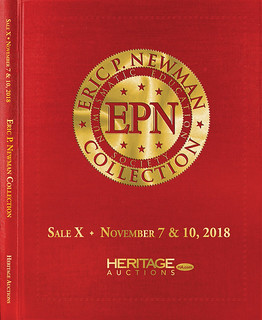
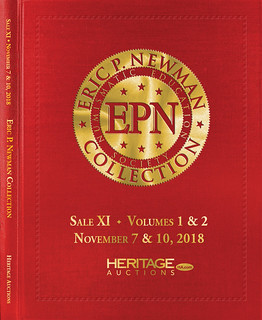
LEFT: Special Hardcover Edition of Sale X features selected United States Paper Currency.
Pre-Orders
Available
RIGHT: Special Hardcover Edition of Sale XI features Coins, Mechanical Devices, Books and Documents. Also includes Washington Gold Piece Catalogue.
Pre-Orders
Available
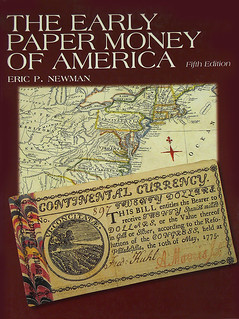
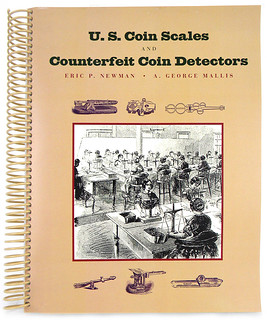
LEFT: Voted as one of the Numismatic Bibliomania Society’s “One Hundred Greatest Items of United States Numismatic Literature.
RIGHT: Companion book for Newman Collection Sale XI, in which Eric Newman's collection of counterfeit coin detectors will be sold.

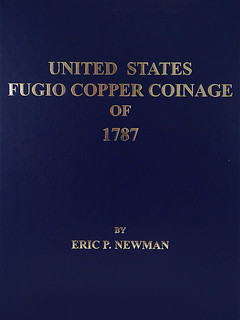
LEFT: The award-winning biography of one of America’s finest numismatists, whose extraordinary collection was formed over the course of nearly ninety years, and whose publications remain the standard works on their subjects. 2016 Numismatic Literary Guild Book of the Year.
RIGHT: 176-page expansion of Eric P. Newman's original article published by Wayte Raymond in the Coin Collectors Journal of January 1949. Now the standard work on the subject.
Sales I through XI are available from the Kolbe & Fanning’s website at numislit.com.
Limited Time Offer:
Purchase complete set of 11 Special Edition Hardcover Sales for $900 (free U.S. shipping)
Complete your collection today!
I had the pleasure of visiting Eric and combing through his library. It is a treasure, and a sale not to be missed. I'm eagerly awaiting the catalog. -Editor

MINT DIRECTOR JAMES P. KIMBALL ARCHIVE
An archive of material relating to U.S. Mint Director James P. Kimball is for sale. Here's an excerpt from the dealer listing. -Editor
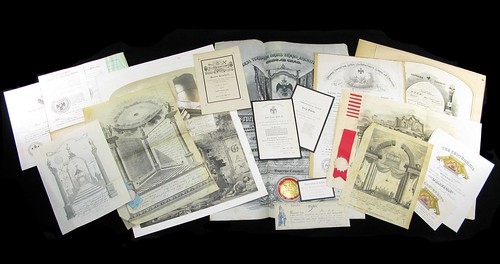
Archive. Approximately fifteen ornate Masonic documents, many relating to James P. Kimball and his family. Kimball was a noted geologist and one-time Director of the United States Mint. Plus over sixty related letters, documents, and ephemera most of which concern Kimball's Masonic activities. Many of the documents are masterpieces of the art of printing.
James P. Kimball (1836-1913) was born in Salem, Massachusetts. He first studied at Harvard and subsequently at several institutions in Germany including the Georg-August-Universität in Göttingen. He became a professor of Chemistry and Economic Geology at Cornell in the 1850s. His work was interrupted by the Civil War, where he served on the staff of Gen. Irvin McDowell and was present at Second Bull Run, Antietam, Fredericksburg, Chancellorsville, and Gettysburg. Toward the end of the war, he left the army to work as a mining engineer in New York, taking the position of President of the Everett Iron Company. After some time working for the United States Geological survey, he served as Director of the United States Mint from 1885 to 1889. Following that, worked as a private consulting geologist to western mining and railroad interests.
Condition Folds, minor foxing, mounting remnants on verso. Some still affixed to loose scrapbook pages, else fine condition.
For more information, see:
Masonic Documents: James P. Kimball archive of master Mason, geologist, and
Director of the United States Mint - with superb engravings (https://www.abebooks.com/Masonic-Documents-James-Kimball-archive-master/30102394121/bd)
NEW BOOK: PUNCHMARKED COINS OF RAJASTHAN
As noted in earlier articles, sites like PrintsAsia.com may be able to offer better deals for books published in India, but here's a new title available from Bagchee.com on the punchmarked coins of Rajasthan. -Editor
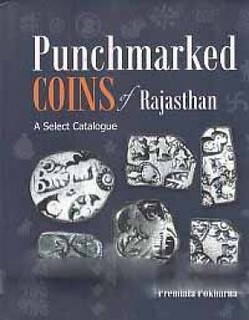 Punchmarked Coins of Rajasthan: A Select Catalogue
Punchmarked Coins of Rajasthan: A Select Catalogue
Authors (s): Premlata Pokharna (Author)
Format: Hardcover
ISBN-13: 9788180351266
Pages: xiv+354p., 1 Unnumbered Page;
Illustrations Black and White; 1 Map Black and White; 28cm.
Pub. date: 06.08.2018, 1st ed.
Publisher: Unique Traders
Language (s): English
Bagchee ID: BB115640
List price: US $ 83,00
Bagchee price: US $ 74,70
For more information, or to order, see:
Punchmarked Coins of Rajasthan: A Select Catalogue
(http://www.bagchee.com/books/BB115640/punchmarked-coins-of-rajasthan-a-select-catalogue)
NEW BOOK: RESEARCHES IN EPIGRAPHY AND NUMISMATICS
Here's another recent title from Bagchee.com on Indian Numismatics and Epigraphy.
-Editor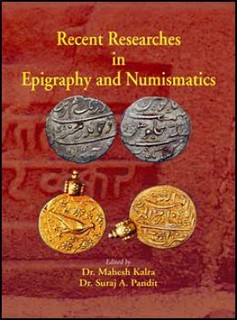 Recent Researches in Epigraphy and Numismatics
Recent Researches in Epigraphy and Numismatics
Authors (s): Dr. Mahesh Kalra (Editor) , Suraj A. Pandit (Editor)
Format: Hardcover
ISBN-13: 9788174792181
Pages: xvii+171p., Black and White Pls; 26cm.
Pub. date: 03.08.2018, 1st ed.
Publisher: Kaveri Books
Language (s): English
Bagchee ID: BB115600
List price: US $ 85,00
Bagchee price: US $ 76,50
The book is born out of the Proceedings of Nat Num Conf’ 2016 held on 24 and 25 December 2016 at Sathaye College, Mumbai by Centre for History Archaeology Epigraphy & Numismatics (CHAEN) in association with the Ancient Indian Culture Department, Sathaye College. The book represents some of the latest research in the fields of Indian Numismatics and Epigraphy with papers by young and upcoming scholars from both the fields.
Nat Num Conf’ 2016 was held on 24 and 25 December in memory of Dr. Parmeshwari Lal Gupta (1914-2001), the doyen of Indian Numismatics whose birth anniversary on 24 December became a cohesive force in holding the Conference for showcasing latest research in Indian Numismatics and Epigraphy. Thus, the organizers found support from various quarters for organizing the conference and a total of 35 Papers were presented under 4 sections of Ancient, Medieval and Modern Numismatics along with Epigraphy. Out of these, 21 papers and 2 presidential addresses have been incorporated in this volume.
Contents: Preface List of Contributors Presidential Address - Dr. Sanjay Garg
Section - I : Ancient Indian Numismatic
1. Late Imperial PMC Coin hoards from Bengal: An analytical study - Sandip Pan 2. The Elephant and Hill Uninscribed Cast Copper Coins and their presence in the late 5th – 4th c BCE - Dr. Kurush F. Dalal 3. WimaKadphises Gold Coinage: Reformation of Coinages in Ancient India from Silver to Gold - Venkitachalam Iyer 4. The Disappearance of Tusker Elephants on Coinageof Later Satavahana Kings: Visible signs of Polarity amongst motifs in Coinage - Chaitanya Bhide 5. Water Crafts on Coins, Seals and Sealings - Sreemanti Laha & Suvasree Chatterjee 6. Dinaras in Early Bengal: Circulation and Beyond - Soumya Ghosh.
Section - II : Medieval Indian Numismatics
7. Revisiting the Repousse Minting Technique - Abhick Sarkar 8. Working Theory on Metrology of Ancient and Medieval Indian Coins: An Introduction - Mukesh Sharma 9. A New Classification of Mughal Mints with special reference to Mughal Deccan - Dr. Mahesh A. Kalra 10. Portugal Honours Garcia Da Orta: The First Landlord of Bombay (Mumbai) with a Coin Issue - Adv. Ashok Shahani.
Section - III : Modern Numismatics
11. The Relevance of Mahatma Gandhi as a Numismatic and Philatelic Icon in the Twenty First Century - Dr. Mahesh A Kalra 12. India Post: Themes & Biases in Commemorative Stamps Issued From 1995-2015 - Raamesh Gowri Raghavan.
Section - IV : Epigraphy
President's Address - Marathi Epigraphic Records: A Rich Source of Regional History - Dr. Anuradha K Ranade 13. A Medieval Memorial Stone at Wagholi, District Pune - A Study - Dr. Manjiri Bhalerao 14. Raigad Plates of Vijayâditya: A Reappraisal - Dr. Ambarish Khare 15. Architecture of a cave at Karle in the light of its Donative Inscription - Anand Kanitkar 16. Devnagari Inscription from Mandapeshvar Cave - Shamika Sarvankar 17. The Sohgaura Bronze Plaque Inscription: A Critical Appraisal - Soumya Ghosh 18. Padan Inscriptions: Some New Observations - Dr. Suraj A. Pandit & Dr. Prachi Moghe 19. Numismatic Gleanings from the Corpus of Ass-curse Steles - Harshada Wirkud ‘ 20. Epigraphs at Raigad Fort: The exceptional ones..! - Dr. Milind Paradkar.
For more information, or to order, see:
Recent Researches in Epigraphy and Numismatics
(http://www.bagchee.com/books/BB115600/recent-researches-in-epigraphy-and-numismatics)
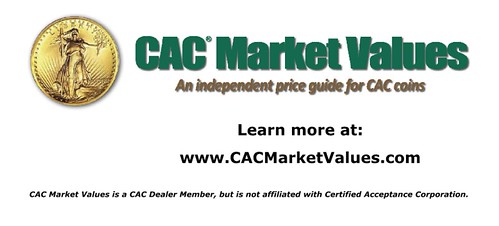
EL SITIO NO. 28 PUBLISHED
Nicolás Santerini submitted this English summary of the contents of the latest issue of El Sitio. Thank you! -Editor
 El Sitio No. 28
El Sitio No. 28
Year VII, September 2018, ISSN 1688-8952
Number 28 (September 2018 ) of “El Sitio”, the electronic magazine of the Instituto Uruguayo de Numismatica, has 22 pages and contains three feature articles plus the usual information and news sections.
In the first article, Mario Perutti discusses the variants of the Uruguayan 50 cent coin of 1894.
The second article, by Sebastian Aguilera, is an interesting account of the Polish 2 Sloty coin of 1924, the only Polish coin of the 20th century struck in coin alignment.

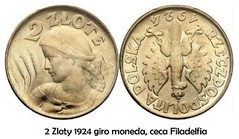
In the third article, Daniel Padula presents a medal issued to the members of the Uruguayan State Council for the period 1981-1985, and the recipient of this particular medal, the noted Uruguayan historian Fernando Assuncao.
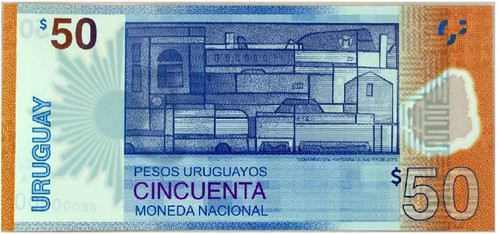
The information section contains an account of the lecture given at the institute by Daniel V. Loustaunau on the links between numismatics and national heritage, as well as an informal talk delivered by the institute’s member Horacio Morero on bordello tokens. NB. This issue advertises the 2018 edition of the Jornadas Uruguayas de Numismatica, the annual Uruguayan numismatic convention, to be held on 9, 10, 11 November 2018 at the Montevideo Holliday Inn Hotel, Calle Florida 1418, Montevideo, Uruguay.
The complete issue can be viewed online (in Spanish) here:
http://iunuy.org/
To read the earlier E-Sylum article, see:
EL SITIO NO. 27 PUBLISHED (http://www.coinbooks.org/v21/esylum_v21n24a03.html)
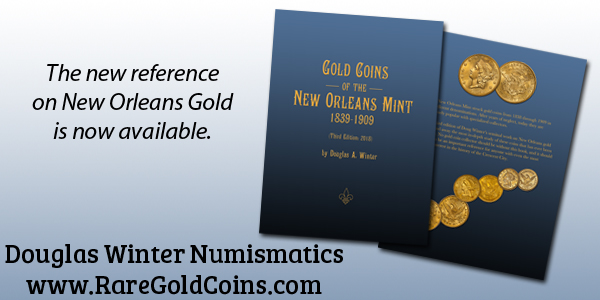
NEW PERIODICAL: KOINON
 KOINON General Editor Nick Molinari writes:
KOINON General Editor Nick Molinari writes:
I wanted to alert you to a new journal in classical numismatics produced by the Societas De Tauro Cum Facie Humana, and published by Archaeopress in Oxford. There are many notable figures on the editorial advisory board and I would certainly appreciate you posting a link to the Archaeopress listing and the Open Access Sampler in your weekly newsletter.
I'd be happy to. Here is some information from the web site, and links Nick Molinari provided. -Editor
KOINON: The International Journal of Classical Numismatic Studies
As the name indicates, KOINON is a journal that encourages contributions to the study of classical numismatics from a wide variety of perspectives. The editors will consider papers concerning iconography, die studies, provenance research, forgery analysis, translations of excerpts from antiquarian works, specialized bibliographies, corpora of rare varieties and types, ethical questions on laws and collecting, book reviews, etc. All papers go through a process of peer review orchestrated by the General Editor. However, any author writing in a language other than English must have the paper read by an approved independent reader, unless a member of the editorial advisory board is competent in both the language in question and subject matter.The editorial advisory board is made up of members from all over the world, with a broad range of expertise covering virtually all the major categories of classical numismatics from archaic Greek coinage to late Medieval coinage.
For more information, see:
http://www.archaeopress.com/ArchaeopressShop/Public/defaultAll.asp?Series=KOINON
https://www.academia.edu/37587354/KOINON_I_Inaugural_Edition
_Open_Access_Sampler

SPMC NEWS & NOTES
The Society of Paper Money Collectors (SPMC) has a free weekly newsletter edited by Loren Gatch that provides links to a number of paper money articles from around the world. Loren wrote a column about it for the September/October 2018 issue of the club's Paper Money journal. With permission, we're republishing it here. -Editor

“News & Notes” at Four Years
Now in its fourth year, SPMC’s weekly blog “News & Notes” chugs along, appearing weekly both on the Society’s website and as an email sent to some six hundred online subscribers. At this point, the blog is a routine production that takes me a few hours each week to piece together. But to call it routine doesn’t at all imply that I’ve grown indifferent to it. To explain, I thought it would be worthwhile to recount how “News & Notes” came about and how it’s put together.
Like many other enterprises, the Society entered the Internet Age by developing an online presence for its members. A good website should both serve its members and reflect their activities. In my experience, any website that doesn’t offer routine evidence of updating and change raises a red flag about the energy of the organization behind it. So, when I got involved with SPMC governance some four years ago, I thought that adding a little bit of yeast to the website seemed like a good first project.
The question was, what would that project look like? By temperament, I’m a conservative, which means that when I think about doing something, I look to see how it has already been done well, and do likewise. In this instance, Wayne Homren’s E-Sylum really stands out to my mind as the best example for how an online presence can bridge the virtual and physical worlds of collecting, while encouraging active engagement from a discerning readership.
Other online aggregators, such as Scott Purvis’s CoinWeek or Ursula Kampmann’s CoinsWeekly, are good at developing and publishing content, but that would be beyond the capacity of a single individual like myself, working only a few hours a week. Also, unlike Homren, I don’t have the time or ability to pull together numismatic and bibliomaniacal (?) news, provide perspective on it, and cultivate the online community that contributes so much worthwhile material to his site. To that extent, E-Sylum serves at once as a news aggregator, a publisher of original content, and a bulletin board for a lively constituency of collectors and scholars. It’s in a class by itself.
If I couldn’t aspire to do all that, I reckoned, then a simple approximation of one part of it might do, and that was the aggregating of news links, without providing commentary, about anything relevant to paper money and its collection. And that’s basically what “News & Notes” is.
My original plan, and one which I have mostly stuck with, was to divide up the weekly news about paper money into three categories: (1) paper money and currency as a collectible and as a factor in public affairs; (2) the industry that produces paper money—banknote printers, security paper producers, and ancillary firms; and (3) any criminal activity associated in some way with paper money. This last category includes, naturally, counterfeiting, but also any frauds and scams that involve paper money as a prominent focus.
The weekly routine—and a routine it has to be—begins with Google News alerts set to selected keywords, with links sent to my email inbox. After working through those, I turn to collector and industry websites for additional material. Finally, if there’s time, I’ll nose around for sources in French, Spanish, and German.
Of the three types of news, the first is the easiest to sort. Numismatic publications provide feature stories, auction news, and other items. Some are more link-friendly than others, but that is their commercial choice. A few collectors’ blogs are impressively up-to-date in their coverage of new banknote issues. More broadly, general news about currency—for example Venezuela’s monetary travails, or India’s demonetization of high-value banknotes—invariably shows up in the weekly links, and incidentally underscore how relevant money and currency remains to a wider public audience.
Industry-related links have tended to be fewer in number, consisting of press releases by companies, analyst reports, or other news related to the technical production of paper currency.
Finally, the theme of money and crime proved more haphazard than I’d have thought. Yes, counterfeiting is a chronic problem, but most cases of it are squalid and uninteresting, in the sense that any fool with a printer can produce some illegal facsimile of currency. Thus, the blog has focused on more systematic counterfeiting operations—Peru or North Korea, for examples—and on currency- related crimes that involve more than the ordinary level of perfidy, or about which there might be some interesting twist.
Together, those three elements make up “News & Notes” in its current form. If you are not a subscriber to the email, you can find the blog version posted every Tuesday on the SPMC website. If you are a subscriber, check your spam folder in case you are missing it!
Only SPMC members can subscribe by email, but as noted it is available for free on the SPMC website. -Editor
To read News & Notes, see:
https://www.spmc.org/news-and-notes
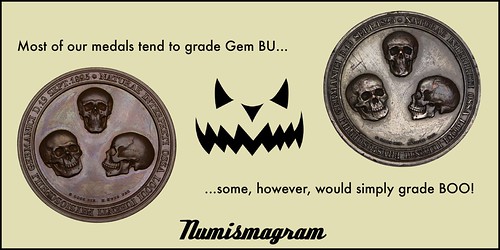
CAL WILSON (1944-2018)
Numismatic literature dealer Cal Wilson passed away last Friday. An early member and officer of NBS, his efforts helped create the numismatic literature market and sustain the club we all know and love today. His house organ The Repository was an avidly-read hardcopy forerunner of The E-Sylum, bringing news and humor to aficionados of the developing hobby of collecting numismatic literature. Here's a memoir by Joel Orosz. -Editor
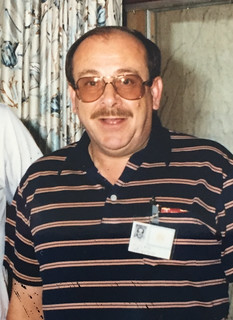 Cal Wilson became a numismatic book dealer in 1980, joining Frank Katen and George Frederick Kolbe in that then-uncrowded field. How history will judge his eight years
as a bibliopole depends a great deal on whether the historian was a customer (who universally loved him), or a consignor, (who sometimes complained of slow or inadequate
settlements). Either camp, however, had to admit that his career was consequential. Cal’s second auction sale, on May 31, 1982, was a worthy successor to Kolbe’s
breakthrough 9th sale of the year before, and together, these auctions firmly established the market for numismatic literature in the United States.
Cal Wilson became a numismatic book dealer in 1980, joining Frank Katen and George Frederick Kolbe in that then-uncrowded field. How history will judge his eight years
as a bibliopole depends a great deal on whether the historian was a customer (who universally loved him), or a consignor, (who sometimes complained of slow or inadequate
settlements). Either camp, however, had to admit that his career was consequential. Cal’s second auction sale, on May 31, 1982, was a worthy successor to Kolbe’s
breakthrough 9th sale of the year before, and together, these auctions firmly established the market for numismatic literature in the United States.
Cal made another contribution to the numismatic literature hobby, a periodical for numismatic bibliophiles. It began life as Wilson’s Numismatic Repository with vol 1, no. 1 in October of 1982, changed its name to just “The Repository” with vol 2, no 4 in July 1984, and ended with vol 5, no 4 in April of 1988. (a single issue was later published online, dated October, 2001). The Repository was a lively little magazine, where many numismatic bibliophiles (myself included), first saw their names in print. While it did much to advance the hobby, Cal never took it overly seriously. The very first issue carried this tongue-in-cheek notice: “Not copyrighted. Unlike most other publications, any portion of “Wilson’s Numismatic Repository” may be reprinted without permission. Besides, who would want to?”
The Numismatic Bibliomania Society also owes much to Cal’s exertions on its behalf. In the years after its founding in 1979, the Society found it difficult to organize meetings and to publish The Asylum on a regular schedule. Cal rallied West Coast members of the NBS, and they announced the organization’s revival with a letter to the membership dated October 4, 1982. He served as NBS President from 1983-84, and as a lead Board member for some years thereafter, and built a robust organization that met regularly and published its journal in a timely fashion.
A long, and mostly melancholy denouement consumed the last three decades of Cal’s numismatic involvement. Financial difficulties shut down his numismatic literature business after his 18th sale in 1988, and old disputes over payments due and owing scuttled his attempt to rejoin the NBS in 1999. In 2002, Cal offered the records of the formative years of the NBS, gathered during the period of his leadership, to the highest bidder on eBay. That high bidder, thankfully, was Tom Sheehan, who then generously donated those records to the NBS Archives.
Cal was a warm, engaging and generous man who, at the top of his game, was as good as any leader this hobby has ever had. That he could not sustain this level of excellence for a lifetime does not diminish in any way the fact that he stepped up when when our hobby needed him most. This alone is enough to secure his place in the pantheon of numismatic literature.
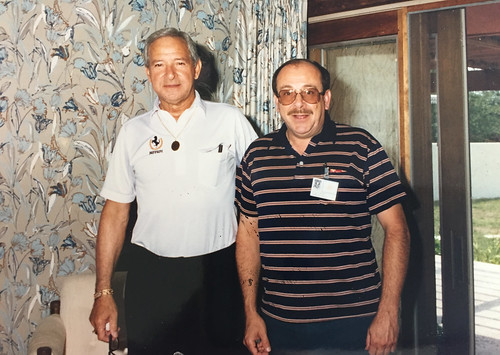
Armand Champa and Cal Wilson; Image courtesy Charlie Davis
I met Cal at some of the early meetings of NBS. I'd been a bidder in his sales and was an avid reader of The Repository. Cal was an E-Sylum reader for years, joining our mailing list on December 4, 1998. He was one of the first copyright owners I reached out to when I began working with the Newman Numismatic Portal, and he immediately granted permission to digitize his publications. It's a trip down Memory Lane, and I encourage NBS members and numismatic bibliophiles everywhere to read it - see the link below. -Editor
Pete Smith writes:
While searching for information on NBS founding members, I came across the attached photograph from page 62 of the Summer 1981 issue of The Asylum. It was taken at the reception held following George F. Kolbe's sale of June 12-13, 1981. Several of the NBS founding members are in the picture. Cal Wilson is fourth from the left.
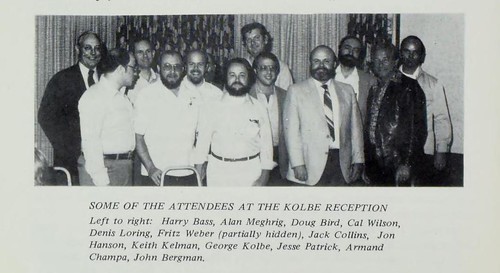
Dave Hirt writes:
Sorry to hear about the death of Cal Wilson. Of the 18 literature sales he had, I bid in most but not all of them. I always did business with him with no problems. One time at a Baltimore coin show I had a long interesting conversation about numismatic literature with him. It is sad that financial problems caused him to stop his sales thirty years ago.
George Kolbe writes:
I was saddened to learn that Cal Wilson has passed away.
In the early 1980s, Cal’s entry into the numismatic literature marketplace markedly advanced interest in rare and out of print American numismatic publications. His enthusiasm was infectious.
Regretably, his love and devotion to the world of numismatic books was insufficient to ensure longevity. Cal was at the right place at the right time, though, and he gave numismatic literature and, specifically, the Numismatic Bibliomania Society, much-needed boosts.
Cal did not take himself too seriously. Shortly after Wilson’s Numismatic Repository began publication, Cal mentioned to me that his wife referred to it as the Numismatic Suppository.
Cal was good friends with Armand Champa and John Bergman. Sadly, these three stalwarts are no longer with us.
Thanks, everyone. Here's an excerpt from Cal's online obituary. -Editor
Mr. Calvin Wilson, 74, passed away on Friday, October 12, 2018 at his residence. He was born August 18, 1944, in Florida to Calvin Otto Wilson, Sr. and Nevada Hall Wilson. He was employed by Crown Cork and Seal Manufacturing Company as their Production Planning Supervisor prior to his retirement. He was preceded in death by his parents.
Survivors include :
his Wife, Cindie Wilson
One Son:
Chris Wilson
Three Daughters:
Lara Rowlette,
Brittany Briscoe and
Rachel Bailey
One Brother:
Wayne Wilson
Five Grandchildren
Who would want to reprint material from The Repository? We would! See the next article in this issue for a biography of Cal Wilson in his own words.
-EditorTo read the complete obituary, see:
Calvin Wilson AUGUST 18, 1944 ~ OCTOBER 12, 2018 (AGE 74)
(https://www.peckfuneralhome.com/notices/Calvin-Wilson)
To read Wilson's Numismatic Repository on the Newman Numismatic Portal, see:
Wilson's Numismatic Repository (https://nnp.wustl.edu/library/book/535865)
CAL WILSON'S NUMISMATIC AUTOBIOGRAPHY
In an article on the first page of the inaugural issue of his house organ Wilson's Numismatic Repository, numismatic literature dealer Cal Wilson documented the backstory of how he came to be in the business. We're republishing it here in its entirety from the Newman Numismatic Portal. Thanks to Pete Smith for alerting us to this article. -Editor

Welcome to the first issue of "Wilson's Numismatic Repository," and it is my most fervent hope that you will enjoy the comments offered here and in the few following pages. The intent of this little periodical is not necessarily to present information of earth-shattering importance, but rather to have a little fun, and perhaps create the medium for an open forum for the exchange of ideas, comments, opinions, etc., relating to the pursuit and enjoyment of numismatic literature.
At present, I have no delusions of issuing this periodical on a regular basis, as the operation of a one-man business precludes such foolishness. However, I fully intend to publish from three to six issues annually if it is enthusiastically received by its recipients. All persons presently on my mailing list will receive copies, and it will be made available to anyone requesting it at no cost. Now, even if it's not very good, the price should spur the aforementioned enthusiasm.
Some of you have been customers since I first began issuing fixed price lists nearly two and a half years ago; and I have been privileged to meet many of you personally during the A.N.A. and other regional, state and local conventions. For those of you who may only recently have communicated with me, perhaps a very brief biography is in order. Even if it's not, this is my publication, and I can do anything I want to. So, here goes.
I first saw the light of day on August 18, 1944 in Pensacola, Florida, the firstborn of a career Navy family. Being a service "brat" had a strong influence on my early interest in numismatics, as my father quite frequently was deployed to "far away places with strange sounding names," affording him the opportunity to obtain the coinages of the various countries he visited. These odd little pieces were generally dispersed among my two younger brothers and myself; however, I was the only one of the three of us to seriously pursue numismatic study with any interest.
During the mid fifties, while attempting to earn my Boy Scout merit badge in coin collecting, I had the good fortune to encounter a fine and wise coin dealer in the small hamlet of Brunswick, Maine where my father was stationed at the time. He was the local counselor for our scout troop, and it was during my first visit that he advised me to follow the wisdom of the late Aaron Feldman and "buy the book before the coin." So it was, that on that Fall day in 1957, I began my numismatic "library" with a brand new copy of the thirteenth edition "Redbook." I became obsessed with the hobby in general and, having always been a voracious reader, with the bibliophilic end specifically. My collecting interests continued unabated until I graduated from high school in 1962. From that time until about six years ago, the hobby had lost me.
After leaving college, I ventured West and settled in Sacramento, California where I began my professional career in the container industry. In 1968, I married Lynne Elliott, and for the next six years the two of us spent our time alternating between the West Coast and the Midwest as a result of frequent transfers offered by my employer. Finally, in 1974, I changed companies and settled in ‘Fremont, California. I was finally able to "settle down" in one place, and at that time, my numismatic yearnings resurfaced stronger than ever.
Having been removed from the hobby for some twelve years, I soon discovered that a virtual "mountain" of information and literature had been dispensed during my hiatus. I had to have it all. Though, at the time, I was still more of a coin collector than bibliophile, I felt the need to buy everything printed on the hobby. It wasn't long before the quest for knowledge prevailed over the desire to collect the actual coins, and I soon found myself buying entire libraries to obtain that one or two pieces I just had to have. By now, I was vest-pocketing as a coin dealer at local shows, and I began offering a few duplicate books at my table.
Surprisingly, interest in the literature was quite strong, and within a period of less than six months, I was setting up at the shows with only books, having almost totally disposed of my coin holdings. But, coin shows only come about once a week, and I had to be more involved than that. So early in 1980, I ran my first advertisement in "Coin World" and "Numismatic News," offering a complete set of Redbooks, and requesting want lists. I was deluged with offers to buy and sell books, periodicals, catalogues and all manner of related material. It soon became apparent that in order to properly service the needs of my new-found customers, I would be forced to make perhaps the most important decision of my life.
After more than fifteen years in manufacturing, and with a fine upperlevel management position which allowed me to live quite "comfortably," I made the decision to try the book market on a full time basis. That was just over a year ago, and I have no regrets so far. Certainly, the financial rewards, so far, are considerably less than when I was surrounded by the security of a nice "guaranteed" salary. But at the same time, I have never enjoyed myself more, and I wouldn't trade anything for the many friendships which I have acquired in the past fourteen months. I plan to stay in this business for a looooong time!
To read the complete article on the Newman Numismatic Portal, see:
Wilson's Numismatic Repository (https://nnp.wustl.edu/library/book/535865)
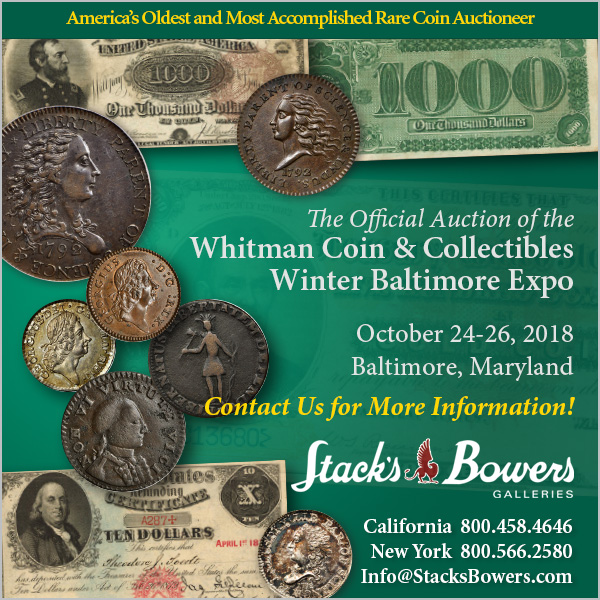
DEL BLAND (1933-2018)
Another charter member of NBS passed away this week - U.S. Large Cent expert Del Bland. Pete Smith and Charlie Davis passed along this online obituary. Thanks. -Editor
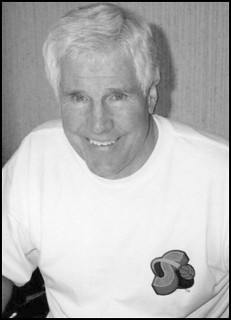 Delmar Norris Bland (1933 - 2018)
Delmar Norris Bland (1933 - 2018)
Born October 26, 1933 - Died, October 16, 2018 Delmar Norris Bland, or Del, of Stanwood, WA, 84, passed away the afternoon of Tuesday, October 16, 2018 in his home, after a period of heart trouble. Del was an expert numismatician, one of the world's most consulted authorities on early coins of the United States.
He leaves behind his three beloved sons and their families, Stephen Bland, 58, of Sea Girt, New Jersey, and his wife, Lisa Bland, and daughter, Julia; Gary Bland, 56, of Bethesda, Maryland, and his wife, Lynda Grahill, son, Carson, and daughter, Emery; and Larry Bland, 55, of Madison, New Jersey, and his wife, Donna Bland, daughters, Courtney and Kaitlyn, and son, Thomas.
Born in Orange, Texas, son of Tracy Bland and Marion (Bland) Neil, Del spent his school-aged years in Everett, Washington, where he settled with his mother as a young boy. He graduated from Everett High, where he was a varsity athlete in three sports, in 1951. After spending some time at the University of Washington and Everett Junior College, he relocated to San Jose, California, where he lived for many years. He received his degree at San Jose State University. A veteran of the Korean War, he served most of his time in the Army in Germany.
Del began collecting, buying and selling coins-primarily U.S. large cents from the colonial era-in the 1950s. Coin collecting became his passion and his profession for the rest of this life. He ultimately became one of the country's foremost experts on early American copper large cents, particularly on the 56 varieties of 1794 large cent. He traveled all over the country for coin shows and received multiple awards from U.S. numismatic associations for his research and expertise on large cents. He is a co-author of Walter Breen's Encyclopedia of Early United States Cents, providing, according to one numismatic expert, "incomparable pedigree and condition census research" in support of the publication.
Del's love of large cents was matched by his joy of playing basketball, which he did competitively until age 75. He traveled the world with his East Bank Saloon teammates, won championships and MVP awards-usually playing at least three times a week at his favorite gyms near his home, and especially at the Everett YMCA.
Del married his beloved Nancy (Angell) Bland in 1978. They met at Hereth's Thriftway in Snohomish. Del and Nancy loved to hit the casinos in the area, go to garage sales, and spend time visiting friends and relatives. Collecting something or another was one of their favorite hobbies, and they loved their dogs. He also loved Rocky Road ice cream and Dinty Moore beef stew; she loved wine and thrift shops. Nancy passed away in February 2018. A private funeral and burial service will be held on October 20, 2018 in Snohomish, WA.
To read the complete obituary, see:
Delmar Norris Bland (1933 - 2018)
(http://www.legacy.com/obituaries/heraldnet/obituary.aspx?page=lifestory&pid=190523915)
I knew Del through mutual friends in NBS, visiting his home outside Seattle one time in the company of Walter Breen and other bibliophiles. His extensive notebooks on Large Cent provenances were legendary, and we saw these on our visit. That picture is pure Del. A tall, affable gentleman, he always wore a smile. He will be greatly missed. -Editor

Del Bland and Armand Champa; Image courtesy Charlie Davis
Dave Bowers writes:
Del was a technician in the large cent field, a scientist with excellent methodology. His work will live after him.
John W. Adams writes:
I knew Del Bland very well, back in my cent collecting days in the 1970's and 1980's. We bought several sizable collections together: Del found the material, he and Denis Loring sold it and I was the bank. Del kept the books and, to say that he was fair and scrupulously honest, should be printed in bold, block letters. His eye for large cents, his ability to attribute them and the accuracy of his grading were all legendary.
Yes, Del was "affable". At six foot three or so (one of his nicknames was "Tree"), he appeared to be a big, dumb jock. However, underneath the "bland" exterior was a serious scholar who stood out in his peer group of large cent intelligentsia. There is a little larceny in just about every collector but, in Del Bland, there was none. He was trusted by all and, of course, he was universally loved.
Del's voluminous, carefully-kept notebooks are now at the American Numismatic Society, where they will provide a lasting monument to the accomplishments of this remarkable man.
Denis Loring writes:
I had the pleasure of knowing Del for nearly 50 years. I think he was 6’5”. Like Eric Newman, Del was a true "truth seeker," no matter where it led him. He was a tireless researcher, dedicated collector, nth degree copper weenie, and above all a consummate gentleman and a plain old nice guy. Del didn't have a BS bone in his body: what you saw was what you got. Rest in peace, my friend.
Jim Neiswinter writes:
The book about Eric Newman is called Truth Seeker. If a book is ever written about the life of Del Bland it would have to be titled Information Seeker. Del was constantly looking for information on large cents and the people who owned them. Not just the current owners. Del wanted to know every person, present and past, who had owned significant (and even the less significant) large cents. To that end he travelled the country looking for old catalogues that he could find any kernel of information on pedigrees. I was at the ANS general meeting yesterday and I spoke with Dan Hamelberg. He told me that Del had been to his home in Illinois on three different occasions looking through his vast collection of coin catalogues.
I knew of Del Bland since I joined EAC in 1983. He was a long time member of the club, but I did not get to know him until 1986. In February that year I bought my first coin at auction. I had gone to the Long Beach show for the Van Cleave sale of large cents. It was at this auction that I got the 1793 S15. This is the discovery coin for that variety.
There used to be three coin shows in New York City every year. I saw Del at the May show in 1986. I introduced myself and told him I had gotten the Van Cleave S15. He exclaimed “so you’re the one” and pulled out paper and pen to take down my information. We became instant friends.
A few weeks ago the American Numismatic Society took possession of the Del Bland archives. There were some 30 boxes of material. The majority of this was his “cut & paste” project. My friend Jan Valentine says that Del got at least two catalogues for each sale. He would cut out the plates and info of cents and half cents and paste them into 3 ring binders. Jan believes that Del had 1 binder for each variety of that year from 1793 to 1857. Unfortunately everything the ANS got is sealed until they can decide on the “protocol” for viewing the material.
This was not all of Del’s archives. Jan got a call from Del last year. He offered Jan everything the ANS was not going to get. Jan flew to Seattle in April, rented a van and drove to Del’s home in Stanwood. He took back close to 100 boxes of material to his home Colorado Springs – mostly the catalogues that were not cut up that had Del’s annotations, along with some of Del’s personal items.
The copper community was extremely lucky to have Del do the work he did (and loved doing) for so many years. Who will replace him? He will be missed.

HOLLAND WALLACE (1940-2018)
I have just been informed about the death of Holland Wallace. Holland worked for me at Whitman Publishing Company in Racine for 13 or 14 years and was a highly skilled and detailed numismatist. I clearly remember him on one occasion learning how to read Russian so that he could catalog a section of one of the Whitman books and be sure of his original research. He was always equally thorough with all of his writings and analysis of numismatic items.
Holland was a quiet person, probably not very well known among the numismatic community, but a giant when it came to the special knowledge he imparted through his writings. He will forever be remembered by me for his dedication to the hobby and his kind and caring friendship.
Sorry to hear the news. I never met him, but it sounds like all of us benefited from his work. Ken also forwarded the Whitman publicity piece from 1966 with Holland's photo. Thanks. -Editor

STEVE RATLIFF (1947-2018)
Jerry Schaeper Jr passed along word of the passing of longtime Florida token collector Steve Ratliff. This obituary is courtesy of Steve's son John Ratliff. The photo is courtesy John Wilson, cropped from a group photo he took at the Florida Token Society meeting in the Fall of 2017. Thanks. -Editor
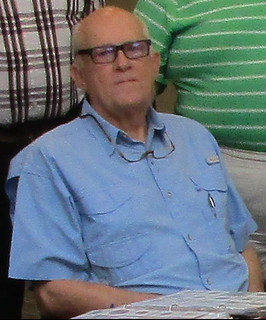 John S. “Steve” Ratliff, 71, of Milton, Florida, passed away October 16, 2018, after a brief illness. He was born January 28, 1947, in Richlands, Virginia, and grew up
in Palatka, Florida. He was a member of UWF’s charter class, graduating in 1969. After graduation, he volunteered for the draft and served in the Republic of Vietnam for
twelve months in fire direction for Headquarters and Headquarters Battery, 52nd Artillery Group.
John S. “Steve” Ratliff, 71, of Milton, Florida, passed away October 16, 2018, after a brief illness. He was born January 28, 1947, in Richlands, Virginia, and grew up
in Palatka, Florida. He was a member of UWF’s charter class, graduating in 1969. After graduation, he volunteered for the draft and served in the Republic of Vietnam for
twelve months in fire direction for Headquarters and Headquarters Battery, 52nd Artillery Group.
After his return from Vietnam, he married the former Anna Elizabeth Speed and worked as an assistant manager for J.M. Fields’s department store. In October 1975, he joined the School District of Santa Rosa County as purchasing manager, where he worked for thirty-three years before retiring as Assistant Superintendent of Administrative Services in December 2008.
Steve began collecting coins as a fifth-grade student and remained an avid numismatist and token collector until his death. He served several terms as president of the Florida Token Society and edited the group’s newsletter, Tokenews, for several decades. He also collected coal scrip, a hobby that began when his grandmother gave him a piece of script earned by his grandfather the day that Steve’s own father was born. Coin collecting facilitated one of his great joys in life: receiving the mail. His other hobby was his car, a red Corvette, which he had fun driving. He enjoyed all things Elvis and often commented that “you can’t go a day without some reference to Elvis.”
Steve Ratliff was preceded in death by his parents, John S. Ratliff and Evelyn Norene Spangler Ratliff, of Palatka, FL. He is survived by his wife of forty-seven years, Anna Speed Ratliff, son John H. Ratliff (Amy), daughters Michelle E. Lee (Nathan) and Jamie L. Alcorn, his brother, Mike Ratliff, and grandchildren Cooper Lee, Foster Ratliff, Trinity Lee, Bentley Ratliff, and Isabella Alcorn.
The family would like to extend their sincere appreciation to the staff and physicians at Baptist Health Care and the friends and family who have help so much during the past few months.
Scott E Douglas writes:
I first met Steve at a Florida Token Society meeting several years ago. He was immediately interested in this ‘Canadian’ and made every effort to make me feel comfortable. Over the last few years, I have had email exchanges with Steve that were always interesting and informative. Steve’s enthusiasm for tokens, especially Florida tokens, was infectious and my conversations with Steve usually left me wanting to research more. I found Steve to be a dedicated, kind and generous person who was always willing to help and to ‘talk tokens’.
Rest in Peace, my American Friend.
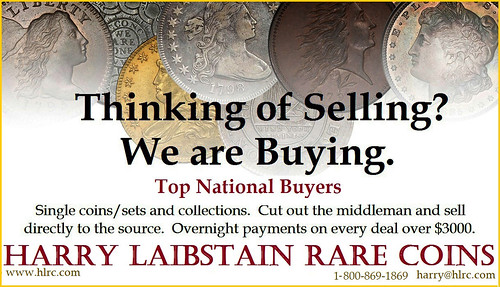
J.T. STANTON (1952-2018)
A note from his longtime co-author Bill Fivaz yesterday announced the passing of J.T. Stanton of Georgia. Here's an excerpt with Bill's permission. -Editor
 With deepest regrets I must inform you that my dear friend J.T. Stanton passed away this morning after about 10 days in the hospital. J.T. had taken a couple falls
recently, had some severe health issues (heart, kidney, breathing, etc.)
With deepest regrets I must inform you that my dear friend J.T. Stanton passed away this morning after about 10 days in the hospital. J.T. had taken a couple falls
recently, had some severe health issues (heart, kidney, breathing, etc.)
A viewing will be on Monday, October 22 at 11 AM at the Radiant Life Christian Fellowship Church, 5619 Skidaway Rd., Savannah, GA 31406 and the funeral at noon. In lieu of flowers the family has requested that donations be sent to The Wounded Warrior Project, P.O. Box 758517, Topeka,KS 66675-8517.
Additional info: J.T. was born on March 5, 1952 in Macon, GA and was a professional printer early in his career. He loved golf, baseball, photography, wildlife and numismatics and had a deep appreciation for the military, thanking them for their service whenever he saw servicemen or servicewomen. He was married to his wife Susan for 38 years and had two sons, Jeffery and Jamie as well as two grandsons and a sister, Barbara.
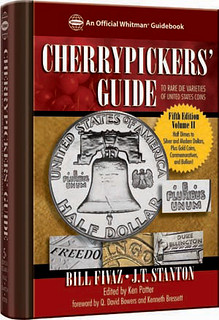 He was also the co-author with Bill Fivaz of the best selling Cherrypickers' Guide to Rare Die Varieties book, now in its sixth printing and truly enjoyed
sharing his vast knowledge with other collectors. He taught courses at the ANA Summer Seminar for many years and was well respected by his peers throughout the hobby, winning many
awards throughout his life.
He was also the co-author with Bill Fivaz of the best selling Cherrypickers' Guide to Rare Die Varieties book, now in its sixth printing and truly enjoyed
sharing his vast knowledge with other collectors. He taught courses at the ANA Summer Seminar for many years and was well respected by his peers throughout the hobby, winning many
awards throughout his life.
J.T. loved research and photographing coins. His expertise provided countless high quality photos of new varieties to the numismatic public who would otherwise not been aware of the new discoveries. J.T. was truly one of the "good guys" and shall be greatly missed, but his legacy shall live on long after his passing.
J.T. was elected to the CONECA Hall of Fame in 2003. The photo above and text below is taken from the web site of the Combined Organization of Numismatic Error Collectors of America. -Editor
J.T. Stanton has proven with over a decade of service to both CONECA and the Error-Variety hobby at large that he deserves to be the next inductee into the CONECA Hall of Fame. J.T.’s loyalty to the club has never been in doubt. He has donated not only time and coins, but also money and professional services, and has done it all with an attitude of humility characteristic of the Southern gentlemen he is. I am proud to call J.T. a friend, a confidant, and in many ways a mentor. He demonstrates with bold colors the essence of what the CONECA Hall of Fame stands for: a lifetime of service to CONECA and the EV Hobby above and beyond the call of duty.
His CONECA honors include: 1. Charter member of CONECA (1983 – present), 2. Two years service on the Board of Directors (1985-1987), 3. Four years service as President of CONECA (1987-1990), 4. Doubled die attributer (1989-1991), 5 The Lonesome John Devine Photography Award (1992), and 6. The Lyndon King Award (1992).
His American Numismatic Association (ANA) and hobby-wide honors include: 1. instructor for the ANA Summer Seminar class on “The Modern Minting Process/Errors and Varieties” (1990-1999), 2. ANA Outstanding Adult Advisor (1992), 3. Numismatic Ambassador Award (1993), 4. ANA Presidential Award (1995), 5 two years service on the ANA Board of Governors (1995-1997), 6. The ANA Glenn Smedley Memorial Award (1997), 7. ANA Presidential Award (1998), and 8. ANA Medal of Merit (2000).
For more information on CONECA, see:
https://conecaonline.org/
Bibliophiles may also know J.T. as the founder and longtime operator of Stanton Books & Supplies. -Editor
Dave Lange writes:
Most people know J.T. Stanton solely as a name on the cover of The Cherrypickers' Guide to Rare U. S. Die Varieties, but to me he was a good friend and collaborator. When he and co-author Bill Fivaz were still the editors/publishers of the CPG we would share discoveries and varieties that made each subsequent edition a little more accurate and comprehensive. The level of cooperation was so great that Bill and J. T. even dedicated one of those editions to me, an honor I still treasure.
We also had some great times as instructors and after-hours buddies at the ANA's annual Summer Seminar and conventions. Though not that long ago, it was a different time in the hobby culturally, and now that everything is so thoroughly copyrighted, trade marked and branded the easy sharing of facts and photos has largely passed. Yet, the memories remain, and I will miss my old friend very much.
Dennis Tucker of Whitman Publications writes:
With their best-selling Cherrypickers’ Guide, Bill Fivaz and J.T. Stanton took “cherrypicking” (searching for coins that look normal at first glance, but have unusual die characteristics that reveal them to be rare and valuable varieties) and grew it into a popular, fun, exciting pursuit for thousands of collectors. Whitman Publishing acquired rights to the CPG in 2005. That’s when I first met J.T. Stanton. I’m proud to have been his publisher and friend for 13 years.
J.T. (or “Bubba,” as Bill called him) was always very humble and unassuming, despite being one of the most influential hobbyists of his generation. He was quick to praise and promote other numismatists, and to give thanks when it was due. Even when he disagreed with someone or held firm to a contentious opinion, he did it with good-natured humor. “I won’t be able to do an autograph session at the ANA,” he told me a couple years ago. “No one wants me to ruin the value of their book with my signature!”
Self-deprecating. But the truth is, whenever die varieties were under serious discussion, J.T. Stanton was in the conversation. In my email archives I have more than 3,000 letters to or from him. Fans nationwide were very happy to have his autograph. And he was always happy to answer questions and share his knowledge. His eBay rating—100% positive after more than 17,000 transactions—illustrates the high regard he earned.
In recent months J.T. continued to be as generous as ever, throwing open his photographic library of modern coins and varieties for Mega Red, the Guide Book of Lincoln Cents, and other Whitman projects. We had some good conversations and he told me how content he was in his new Georgia home in the “country” after recently moving from Savannah. I was looking forward to working with him on future books.
I’m grateful for the 13 years I had with J.T. Stanton. I had no reason to think it wouldn’t be 23 years, or 33. I join the rest of the hobby community in mourning our unexpected loss, reflecting on J.T.’s special importance, and wishing the best for all his friends and his family.
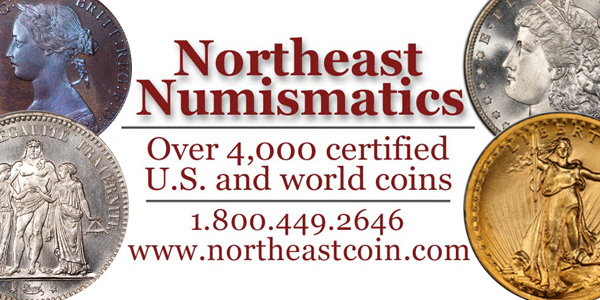
NEWMAN PORTAL ADDS DOUBLED DIE QUARTERS VIDEOS
The latest addition to the Newman Numismatic Portal is a group of videos on Doubled Die Quarters. Project Coordinator Len Augsburger provided the following report. -Editor
Newman Portal Adds Video Series on Doubled Die Quarters
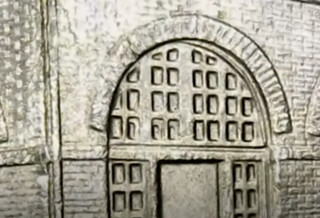 There is a strong tradition in U.S. coin collecting of pursuing die varieties, and, if a single launch point were identified, it would have to be the Levick plate of
1793 large cent varieties published in the April, 1869 issue of the American Journal of Numismatics. Capably sleuthed by Jim Neiswinter in recent years, this photograph
established the benchmark for advanced pursuit of U.S. coinage: examples of each obverse and reverse die, and examples of each die marriage.
There is a strong tradition in U.S. coin collecting of pursuing die varieties, and, if a single launch point were identified, it would have to be the Levick plate of
1793 large cent varieties published in the April, 1869 issue of the American Journal of Numismatics. Capably sleuthed by Jim Neiswinter in recent years, this photograph
established the benchmark for advanced pursuit of U.S. coinage: examples of each obverse and reverse die, and examples of each die marriage.
This worked well enough for 18th and 19th century coinage, but in modern times the gross output of the U.S. Mint defies attempts to collect (or even identify) all of the production dies. Nevertheless, collectors will collect. Today’s focus is on finding more subtle differences in dies that are normally reproduced with a high degree of uniformity. These have been notably documented by Bill Fivaz and J. T. Stanton in the popular Cherrypicker’s series, and in other sources. Kristen Naylor, who has published a related book, has contributed to Newman Portal a number of videos that describe doubled dies in the Washington quarter series.
Image: Doubling in the windows of John Brown’s fort, on the 2016 West Virginia (Harpers Ferry) quarter dollar (KENC 25c 2016 P WV DDR-039).
Link to Kristen Naylor video series on Newman Portal:
https://nnp.wustl.edu/library/book/555855
In the age of YouTube more and more content is available in video form. Imagine if the early titans of U.S. numismatics could share their work with us in video. Please be on the lookout for producers of great numismatic video content such as Kristen Naylor and with their permission we'll include it on the Portal. -Editor
CHEMICAL ANALYSIS OF EARLY U. S. SILVER COINS, PART 2
David Finkelstein and Christopher Pilliod have released a paper summarizing the second phase of a multi-phase project to determine the chemical composition of 1794 and 1795 US silver coins.
-EditorDavid Finkelstein and Christopher Pilliod are releasing a multi-part article series about a project to determine the chemical composition of 1794 and 1795 US silver coins. The pair gave a presentation at the John Reich Collectors Society (JRCS) General Meeting during the ANA World’s Fair of Money in Philadelphia.
The Mint and Coinage Act of April 2, 1792 specified that silver coins were to contain 1485 parts of pure silver and 179 parts copper alloy. This equated to a standard of 1485 / 1664 or 89.24278% or 89.24+% pure silver, and 10.75722% or 10.76-% copper alloy.
Multiple documents stored within the National Archives and Records Administration (NARA) and the Library of Congress indicate that under the leadership of Mint Directors David Rittenhouse and Henry William de Saussure, some or all of the 1794, and most or all of the 1795 dated silver coins were produced to a 90% silver and 10% copper standard. Then, effective November 6, 1795, under the leadership of its third Director, Elias Boudinot, the Mint reverted to the 89.24+% silver and 10.76-% copper standard.
The first phase of a multi-phase project was just completed to determine:
1. what elements and percentages are in the silver coins of 1794 and 1795,2. what elements and percentages are in the copper coins of 1794 and 1795,
3. whether the Mint attempted to refine any of the silver bullion deposits made during 1794 and 1795 to a standard of 89.24+% silver and 10.76-% copper as per the Mint and Coinage Act of April 2, 1792,
4. whether the Mint attempted to refine any of the silver bullion deposits made during 1794 and 1795 to a standard of 90% silver and 10% copper, thus violating the Mint and Coinage Act of April 2, 1792,
5. whether Mint personnel were capable of achieving a refining target of 89.24+% silver and 10.76-% copper,
6. whether Mint personnel were capable of achieving a refining target of 90% silver and 10% copper,
7. the technologies available to 18th century precious metal refiners, and
8. the Mint’s practices for refining silver bullion deposits.
This project began in March, 2015. Thanks to support from the Eric P. Newman Numismatic Education Society, Heritage Auctions, and the Terry Brand Estate, modern chemical analysis technologies were used to determine the chemical compositions of 1794 and 1795 silver and copper coins. Based on the compositional results, statistical analyses were performed, and preliminary conclusions were made.
To read Part 1, see:
Chemical Analysis of 1794 & 1795 U. S. Silver Coins – Part 1 (https://nnp.wustl.edu/library/book/554528)
To read Part 2, see:
Chemical Analysis of 1794 & 1795 U. S. Silver Coins – Part 2 (https://nnp.wustl.edu/library/book/555543)
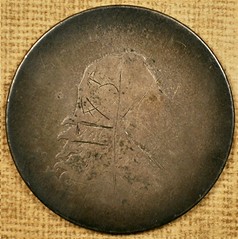
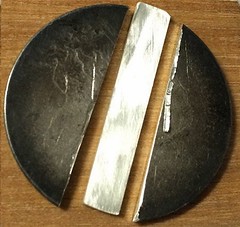
Before and after pictures of a 1795 O-105 Half Dollar. The center piece in the after picture was sent for ICP-AES analysis.
To read the earlier E-Sylum article, see:
CHEMICAL ANALYSIS OF EARLY U. S. SILVER COINS (http://www.coinbooks.org/v21/esylum_v21n39a07.html)

2018 BOSTON MCA-MHS MEDALS CONFERENCE REMINDER
The upcoming medals conference in Boston is shaping up to be a landmark event. A few spaces are available but pre-registration is mandatory. Here's a reminder and overview passed along by John Sallay. If you're thinking of attending but haven't registered yet, please do so ASAP. -Editor
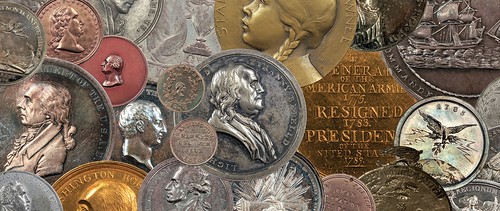
Art and Memory: The Role of Medals
Conference organized by the Medal Collectors of America and the Massachusetts Historical Society Saturday, November 10, 2018, 8:00AM - 6:30PM, at the MHS, 1154 Boylston Street, Boston, MA; Dinner afterward (at the Colonnade Hotel), 7:00PM – 9:00PM
Over 80 serious collectors have already registered for this unprecedented conference on medals and medal collecting, organized by The Medal Collectors of America and the Massachusetts Historical Society. Since the conference space at the MHS can accommodate only 100 people, anyone interested who hasn’t yet signed up should register now, at www.masshist.org/medals .
The theme, Art and Memory: The Role of Medals, was chosen to have wide appeal, with social events added to provide some fun, and encourage discussion among medal collectors and others who are not yet collectors, all in an extraordinary location.
This conference will include a series of presentations on the role medals have played in American history, the evolution of medallic art, and the ways medals have reflected American culture up to the 21st century. Presenters will include: Anne Bentley, John Sallay, Alan Stahl, Patrick McMahon, Jonathan Brecher, Len Augsburger, and Ute Wartenberg Kagan.
In addition, two panel discussions will focus on the artistic beauty and collectability of medals. One panel discussion will cover the stylistic developments from Renaissance medallic art to contemporary art medals (“The Art of the Medal”). The second panel will explore the individual passions that drive numismatists to build their unique collections (“Why Collect Medals?”). Panelists will include several noted numismatists: John W. Adams, Q. David Bowers, Cory Gilliland, Robert Hoge, Scott Miller, Ira Rezak, Rob Rodriguez, and Stephen Scher.
Anne Bentley will also arrange a special exhibit of medals from the fabulous MHS collection, including the unique Comitia Americana set of silver medals presented by Thomas Jefferson on behalf of Congress to George Washington in 1790, the unique gold Manly medal, a Columbia and Washington medal, and many more rare and extraordinary pieces.
There is a $75 per person conference fee, including lunch and the cocktail reception, with dinner afterward optional at an additional $95 per person.
To read the earlier E-Sylum article, see:
2018 BOSTON MCA CONFERENCE UPDATE (http://www.coinbooks.org/v21/esylum_v21n17a16.html)
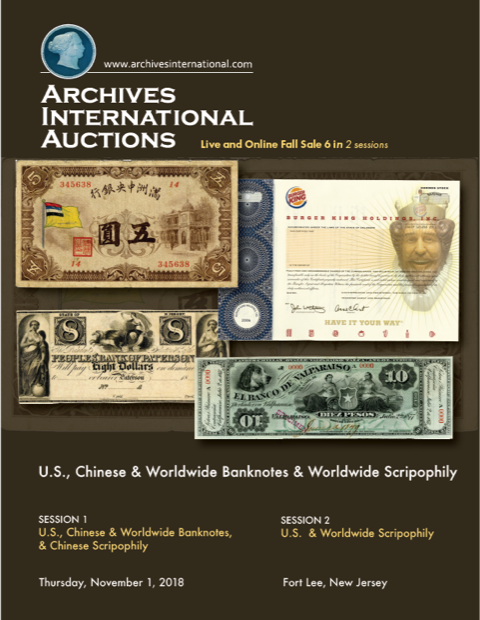
NOTES FROM E-SYLUM READERS: OCTOBER 21, 2018
More on NBS Founding Members
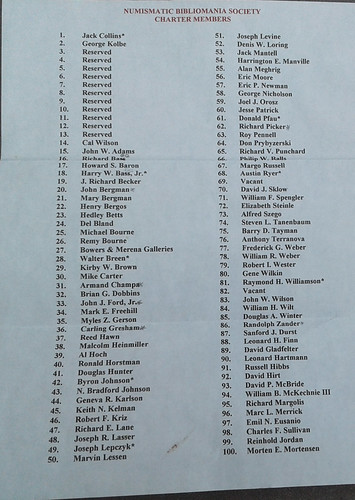 Dave Hirt of Frederick, MD writes:
Dave Hirt of Frederick, MD writes:
About the NBS, founders and early members, I have a list of charter members, with numbers. Jack Collins is #1. George Kolbe is #2. The next group of numbers is marked reserved. Cal Wilson is #14. Then it starts in alphabetical order. John Adams #15 to R. Zander #86. Then a second alphabetical list brings the list to 100 members. I am #92 on the second list.
When I became Secretary-Treasurer in 1996, I got a list of paid up members at that time. Some of the original members were gone from that list. They had either passed away, or had been dropped, I guess, for non payment of dues.
Thanks, Dave. I'm #179 on that list. I was an early member, but not early enough to be among the founding group. -Editor
To read the earlier E-Sylum article, see:
MORE ON NBS FOUNDING MEMBERS (http://www.coinbooks.org/v21/esylum_v21n40a02.html)
Saint Ignatius College Medal
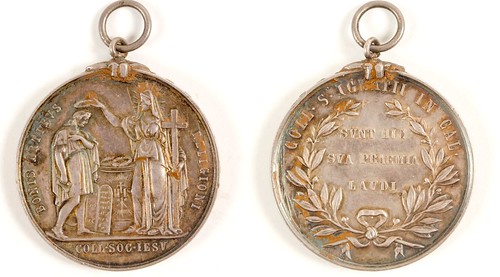
Regarding the St. Ignatius medal pictured last week, Michael Wehner writes:
This medal is from Saint Ignatius College which became the University of San Francisco. The Jesuit high school in San Francisco remains with this name or more commonly "SI".
Sal Falcone came to the 1131th meeting July 28, 2010 of the Pacific Coast Numismatic Society to speak about the medals of the Jesuit colleges. In addition to Saint Ignatius, Santa Clara College issued a similar medal.
Thank you! -Editor
To read the earlier E-Sylum article, see:
: St. Ignatius In California U.S. Mint MedalSELECTIONS FROM HOLABIRD OCTOBER 2018 SALES
(http://www.coinbooks.org/v21/esylum_v21n41a16.html)
The £50 Note and the Underground Economy
Rex Stark writes:
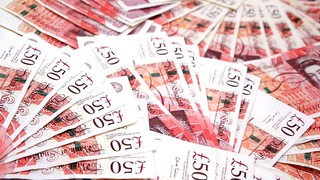 The claims that the 50 pound note is not being scrapped, but will simply be redesigned as a polymer note to provide better security, is a Trojan horse aimed at the
underground economy and at the billions of pounds hidden for decades in mattresses and safety deposit boxes. The problem is that the UK does not treat its currency as a permanent
obligation to the citizens. Here in the US older currency is not devalued and declared illegal when new designs emerge, but that is the norm in the UK.
The claims that the 50 pound note is not being scrapped, but will simply be redesigned as a polymer note to provide better security, is a Trojan horse aimed at the
underground economy and at the billions of pounds hidden for decades in mattresses and safety deposit boxes. The problem is that the UK does not treat its currency as a permanent
obligation to the citizens. Here in the US older currency is not devalued and declared illegal when new designs emerge, but that is the norm in the UK.
I go to London a couple of times a year to buy antiques. Not only do I routinely use 50 pound notes, but I was dismayed a year or so ago to discover that during my six month absence the lowly ten pound note had been replaced with a new polymer series, and that after a grace period of a few months the old notes were no longer legal tender. Fortunately I only had a couple of them in the currency I had taken home on the previous trip.
The redesign proposal for the 50 pound note is mainly a ploy to force people to bring out cash they have put away over the years and expose it to government prying.
To read the earlier E-Sylum article, see:
BANK OF ENGLAND ANNOUNCES £50 NOTE CHANGES (http://www.coinbooks.org/v21/esylum_v21n41a23.html)
Latvian Numismatic Society Sought
Yosef Sa'ar writes:
Does anyone know if there is still a "Latvian Numismatic Society"? I found them with a Journal, published in Houston, from the 1980's using an internet search, but nothing current. Any information with a contact address or person would be welcome.
Can anyone help? Does anyone have a run of this journal? Thanks. -Editor
Dale Krueger Enters Dealing World
Dale Krueger writes:
I've been a coin collector since about 1970, seriously getting into the high grade MS stuff about 1989. My exploits in that realm culminated in my 15 minutes of fame in 2000, when I auctioned off my complete set of MS Barber Quarters. A year or two before that, I discovered the Book and the medals of Karl Goetz. I've been heavily involved ever since, now hold over 1500.
Since the early '80's I had been in the securities world, as a broker, and also raising money. There were too many times that the deals didnt work out the way they were supposed to, and I began to feel I could do better in the collecting arena I had become kind of an expert in-- and maybe have some fun too! It seems many times it's always the same old dealers, and the same old collectors.
I have been attempting to introduce Goetz medals to the brokerage world... why not diversify a bit into hard assets/collectables, and maybe have a little fun doing so? And maybe we can get some new blood into the collecting world at the same time!
Good luck with your new endeavor! Here's his contact information. -Editor
Dale adds:
My email (going back to my Barber quarter days) is Barber25@aol.com .
Phone number is 989-239-4655.
Website is tangibleassetsllc.com
Also on Facebook at private portable wealth

MORE ON PLASTER CASTS IN COIN PHOTOGRAPHY
I flat ran out of time to get everything into last week's issue. Here's a set of earlier responses from readers regarding plaster casts in coin photography. Thanks, everyone, and sorry for the delay. -Editor
Harry Cabluck writes:
Regarding the question about photographing plaster casts of coins in the analog days, a time of slow film and before the halftone process of photographic reproduction.
It may be that foil impressions of obverses and reverses were made of each coin. It would work especially well with high relief ancient coins. The foil mold(s) could have been filled with plaster of Paris. The excess plaster trimmed away.
Photographing plaster, the white of which could be toned down with tea, would eliminate reflections as seen in metal and would help reduce the density range in the photograph of the coin. Eliminating the spectral highlights solves many problems.
Second, By photographing casts, all of the obverses and all reverses could have been imaged in one exposure. So a page layout of half a dozen coins could have been shot on one piece of film... 12 images.
George Frederick Kolbe writes:
Plaster coin casts became popular in the 1870s, up until the mid-20th century and a bit beyond.
The “why” has been addressed.
Typically, the plaster casts were then utilized in photographic printing processes such as autotype, collotype, heliotype, woodburytype, and so on. Though never inexpensive, these technologies were more practical and substantially less expensive than photographic prints.
A popular, ubiquitous, still useful “modern” work on coins, namely, R.A.G. Carson’s 1962 “Coins of the World,” features 64 collotype plates. It was reprinted several times, into the 1970s.
Bob Van Arsdell writes:
Making plaster casts of coins predates the invention of photography. Initially, plaster casts of rare medals and ancient coins were made and sold as “student sets”. They were a means by which students and scholars could have access to the imagery without having access to the coins. The practice was common in the 18th century (if I recall correctly) and probably began much earlier.
When coin photography began, casts were often used instead of the coins for publication work. The plaster completely eliminates the specular (mirror-like) reflections from a coin’s surface. These reflections can obscure the images on the coins. Photographing casts removes the shininess and gives a better representation of the imagery. Casts also eliminate any discoloration on a coin surface. The use of plaster casts has nothing to do with the sensitivity of the film - coins can be photographed using long exposure times.
Plaster casts were used for high-quality numismatic publications in Britain from the 1870s onward. Their use declined after the First World War.
A late example appears in Proceedings of the Prehistoric Society, volume 44, 1978. A Ship Type coin of Cunobeline (early-mid first century AD Britain) needing a casting to see the image better. The copper coin was somewhat corroded and the discoloration obscured the imagery in a direct photograph. The article provides a good example of how a coin’s surface can affect the photographic results. The accompanying plate shows both the direct coin photo and that of the cast.
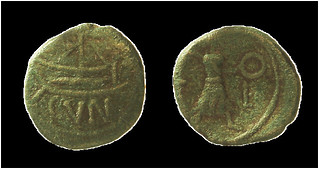
The PPS article also provides a good example of something else - that important numismatic information often appears in archaeological publications.
To read the earlier E-Sylum articles, see:
HOW DIGITAL PHOTOGRAPHY CHANGED NUMISMATICS (http://www.coinbooks.org/v21/esylum_v21n39a19.html)
Plaster Casts in Coin Photography : Plaster Casts in Coin Photography
(http://www.coinbooks.org/v21/esylum_v21n40a08.html)

LE MéDAILLIER MEDAL SHIELD
Here's another response that arrived last week but didn't make it into the issue. Richard Jewell reports owning a medal shield similar to the one Harry Waterson wrote about. Thanks! -Editor
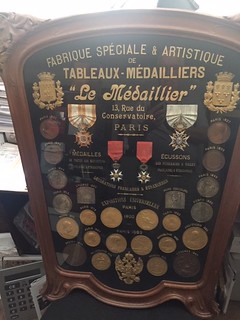 I see that Harry Waterson sent you an article regarding 19th Century Exposition Medal Collection in the October 7th E-Sylum. I too have a similar sign in my
personal collection and I have a majority of the medals depicted.
I see that Harry Waterson sent you an article regarding 19th Century Exposition Medal Collection in the October 7th E-Sylum. I too have a similar sign in my
personal collection and I have a majority of the medals depicted.
I acquired the sign from a Heritage Auction years ago and of course the auction house had limited information regarding the sign, the owner or how they obtained the piece. One can only assume (I dislike using that term) it was a display of the medals and ornaments manufactured at the address in Paris.
Sorry to say doing my own due diligence I came up with “ditto”
Rich forwarded this additional information on his piece. Thanks. -Editor
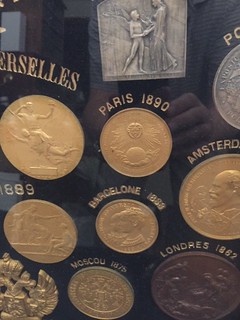
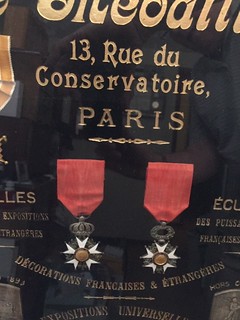
Fantastic 'Le Médaillier' (Paris, France) Medal-Order Shield 24 Medals, Four Military Orders, and Three Coats of Arms in One Display
Fantastic "Le Médaillier" (Paris, France) Badge, Medal-Order Shield. A phenomenal, fantastic, and attention-getting sales sample display from "Le Médaillier" company, Paris, who were based at 13, rue du Conservatoire at the time this piece was produced. This large, wood-framed, plexiglass-enclosed display comprises 24 medals of varying sizes and metals; four military orders or decorations; and three coats of arms. In the couple of days that this display was visible in the present cataloger's office, numerous employees have expressed interest in bidding on it, even those who normally have no interest in medals, military orders, or other exonumia.
Another exciting aspect of this merchant display is the sheer range of work that it covers, from 1823 to 1900. The three coats of arms depict a sailing ship (Norway?), a possibly French fleur de lis design, and a definitely Russian two-headed dragon.
The military orders comprise a beautiful inlaid piece with legend "A la lealtad acrisolada," (perhaps from Spaniards in Cuba), and a second porcelain piece with legend "Virtuti et merito" the motto of the Order of Charles III. Two smaller orders read "Napoleon Empereur des Francais" and "Republique Français 1870."
Medals comprise: Paris 1823, copper, 53 mm, Louis XVIII of France; Paris 1827, copper, 53 mm, Charles X Roi de France; Paris 1834, copper, 53 mm, Louis Philippe I; Paris 1839, copper, 53 mm, Exposition des Produits de l'Industrie, unawarded medal; Paris 1844, white metal, 53 mm "Aux Arts Utiles"; Paris 1849, white metal, 53 mm, Republique Française; Paris 1855, white metal, 53 mm, Napoleon III; London (Londres) 1862, copper, 73 mm, a fine, high-relief portrait of a seated Britannia figure, lion lying at her feet, with three maidens presenting her with gifts from industry and agriculture, three other maidens behind her, no legends; Portugal (Porto) 1865, Exposiçao International Porto 1865; Paris 1867, gilt, 48 mm, Napoleon III; Vienna (Vienne) 1873, gilt, 66 mm, Franz Joseph I Kaiser von Oesterreich Koenig von Boehmen etc. Apost. Koenig von Ungarn; Moscow (Moscou) 1875, a Moscow exhibition/event with 1872 date; Sydney 1876, 73 mm, Sydney N.S.W. International Exhibition, (with date 1879 in Roman numerals), especially fine; Philadelphia (Philadelphie) 1876, gilt, 48 mm, seated female figure bestowing a wreath, from the Centennial Exposition; Paris 1878, gilt, 48 mm, Republique Française; Amsterdam 1883, gilt, 66 mm, Willem III Koning der Nederlanden; Barcelona (Barcelone) 1888, Exposición Universal de Barcelona; Paris 1889, gilt, 60 mm, two pieces showing obverse and reverse, Republique Française / Exposition Universelle; Paris 1890, gilt, 49 mm, Academie Nationale Agricole Manufacturière et Commerciale; Chicago 1893, white metal, two pieces showing obverse and reverse, Exposition International de Chicago (World's Fair), Section Française, Hors Concours; and Paris 1900, gilt, 60 mm, two pieces showing obverse and reverse, Republique Française / Exposition Universelle Internationale.
Besides its status as an attractive and memorable display of medallic art, this piece is loaded with political and mercantile history. Beginning with the French royalty, the firm over time created new markets, first with the royalty among its European neighbors, moving over the decades into more and more international markets, participating in the booming expositions and fairs markets, and eventually reaching faraway customers in countries such as Australia. Although this is a snapshot, a moment in time, of this French company, it could become the basis for extensive research into this fascinating area. (NGC ID# 2TGG, PCGS# 661340)
To read the earlier E-Sylum article, see:
19TH CENTURY EXPOSITION MEDAL COLLECTION (http://www.coinbooks.org/v21/esylum_v21n40a26.html)
THE BOOK BAZARRE
MORE ON MAXIMILIAN FYSCHER WWI PLAQUE
Regarding the Maximilian Fyscher World War I plaque, Greg Burns writes:
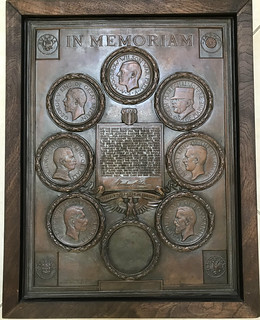 I have an example of this plaque. I had a custom wooden frame made for it and mounted it upon my office wall. I’ve often speculated that as a “memoriam” plaque the
bottom area, blank in Harry Waterson’s piece (as in mine), was meant to hold a photograph of a loved one departed during action in the war, perhaps protected by a glass or
other transparent barrier. There is a cartouche below that space for an engraved insert with their name I presume.
I have an example of this plaque. I had a custom wooden frame made for it and mounted it upon my office wall. I’ve often speculated that as a “memoriam” plaque the
bottom area, blank in Harry Waterson’s piece (as in mine), was meant to hold a photograph of a loved one departed during action in the war, perhaps protected by a glass or
other transparent barrier. There is a cartouche below that space for an engraved insert with their name I presume.
I believe if Harry examines his a bit more closely he’ll find that it’s marked as being manufactured by the Gorham Company “For Our Hero’s, Inc.” (an inscription on the lower right quadrant counterbalancing the lower left notation of the engraver, Fyscher). There’s also a patent on the piece if he digs a bit (dated November 6, 1917) and a copyright G55126 if my notes are close to correct.
Beautiful piece. I’ve seen specimens of Wilson’s portion cut out from the plaque and sold as a separate piece. By grave robbers perhaps? Who knows. I’d love to know more about it and it’s use, but I’ve had to satisfy myself mostly with speculation at this point.
I wondered about that space, and this makes perfect sense. Thanks. I reached out to Harry, but he doesn't own the piece illustrated. -Editor
Harry Waterson writes:
The WWI 'In Memoriam' Plaque I wrote about last week was on eBay and I did not purchase it so I defer to Greg Burns as to what is inscribed on the bottom of the plaque. I was quoting what the seller wrote. Gorham is new news and a great bit of source information. It is too bad that all the Gorham records are in permanent off-site storage at Brown University and are unavailable to researchers. I did find the © number and included that entry in my piece. The numbers match but the © number in the register refers only to the Wilson portrait and not the plaque. I believe Maximilian Fyscher was taking a bigger bite of the apple than was actually proper when he indicated the whole plaque was under copyright.
I would dearly love to see a photo of Greg Burns's plaque. Does the empty socket also have the Indian Head profile?
I like the idea of a personal memorial in the empty socket. But that would mean that only 11 of the 12 Allies were named on the plaque. Further research is definitely indicated. That an empty socket has appeared on two examples of the plaque certainly begs the question. I thank Greg Burns for telling E-Sylum about his plaque and I thank E-Sylum for creating this forum in which this kind of an exchange can take place. Many thanks
Glad to help. This is an interesting topic. Here's Greg's response. -Editor
Greg Burns writes:
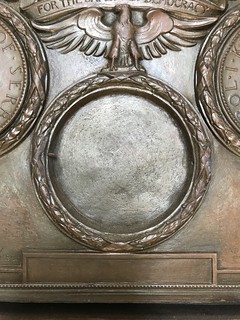 Here's a bit of a close-up on the empty-space portion of my plaque. As you can see, there’s no “Indian head” or spot of solder/adhesive in the middle
that’s visible. I picked mine up several years ago off of eBay for something like $26 (a bargain). The part mentioning the Gorman Company is extremely faint, almost like
someone perhaps tried to obliterate it, so I wonder if all of them were so made. Until Harry’s mention in The E-Sylum I had wondered if I’d ever see another,
and would love to be able to find out more about it if any other readers have info to offer.
Here's a bit of a close-up on the empty-space portion of my plaque. As you can see, there’s no “Indian head” or spot of solder/adhesive in the middle
that’s visible. I picked mine up several years ago off of eBay for something like $26 (a bargain). The part mentioning the Gorman Company is extremely faint, almost like
someone perhaps tried to obliterate it, so I wonder if all of them were so made. Until Harry’s mention in The E-Sylum I had wondered if I’d ever see another,
and would love to be able to find out more about it if any other readers have info to offer.
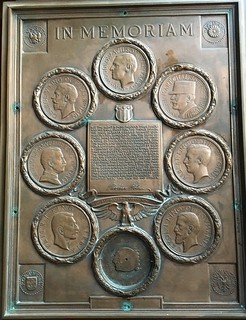

LEFT: Harry's plaque; RIGHT: Greg's plaque
Thanks, guys. We'll be happy to learn of the existence of any other plaques like these. -Editor
To read the earlier E-Sylum article, see:
MAXIMILIAN FYSCHER WORLD WAR I PLAQUE (http://www.coinbooks.org/v21/esylum_v21n41a20.html)
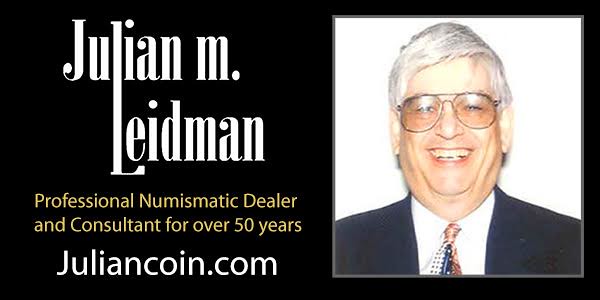
VOCABULARY: TYPES OF MEDALS
Dick Johnson submitted this Word List from his Encyclopedia of Coin and Medal Terminology. Thanks! -Editor
The Business of coins is to circulate as money. Medals, on the other hand, have many uses with, of course, many names. Here is a list of a majority.
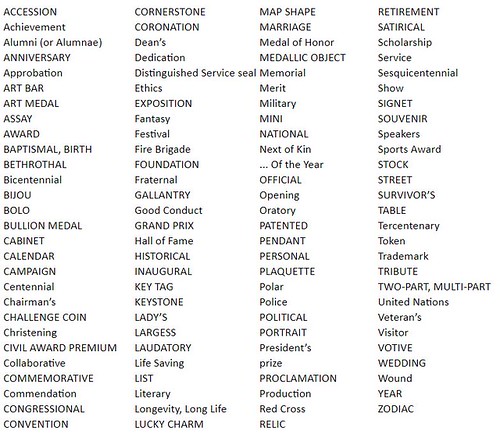
Looking for the meaning of a numismatic word, or the description of a term? Try the Newman Numismatic Portal's Numismatic Dictionary at: https://nnp.wustl.edu/library/dictionary
Or if you would like a printed copy of the complete Encyclopedia, it is available. There are 1,854 terms, on 678 pages, in The Encyclopedia of Coin and Medal Technology. Even running two a week would require more than 19 years to publish them all. If you would like an advance draft of this vital reference work it may be obtained from the author for your check of $50 sent postpaid. Dick Johnson, 139 Thompson Drive, Torrington, CT 06790.
LUTHER BROWN TUTHILL (1859-1930)
 Tuthill, Luther Brown (1859-1930). Numismatist, paper money, coin and stamp collector and dealer. He was a charter member of the ANA being given the member No. 32. The
March 1892 issue of The Numismatist however, lists him as member no. 90. He was an active member of the ANS since May 21, 1900. He was a specialist in paper money, especially CSA
notes, stamps and coins.
Tuthill, Luther Brown (1859-1930). Numismatist, paper money, coin and stamp collector and dealer. He was a charter member of the ANA being given the member No. 32. The
March 1892 issue of The Numismatist however, lists him as member no. 90. He was an active member of the ANS since May 21, 1900. He was a specialist in paper money, especially CSA
notes, stamps and coins.
He was the first-born of five children of Effingham Tuthill (1834-1917) and Clarissa Catherine Brown (1836-1876), born on May 3, 1859, Port Jefferson, Suffolk County, New York.
On November 21, 1888, he married Eliza Calvert Springer (1865-1924), at her home in Oregon, Beaufort County, North Carolina. They had five children...
The 1900 U. S. Census lists him working as a clerk in a general store.
 Luther B. Tuthill was included in a list of dealers published in the The Numismatist, Vol. XIII (1900). (cited by Q. David Bowers, who mentions Luther Tuthill in
a list in: Virgil Brand: The Man and His Era. Profile of a Numismatist. (Wolfeboro, New Hampshire) : 93.)
Luther B. Tuthill was included in a list of dealers published in the The Numismatist, Vol. XIII (1900). (cited by Q. David Bowers, who mentions Luther Tuthill in
a list in: Virgil Brand: The Man and His Era. Profile of a Numismatist. (Wolfeboro, New Hampshire) : 93.)
At the ANA Convention at the World's Fair St. Louis, Missouri, October 15, 1904, Tuthill was elected to the Board of Directors.
He was a long-time friend of William P. Titcomb (1839-1910) of Washington, D.C., considered by him to be the best authority in the country on Confederate Treasury Notes. He published the death notice of Titcomb in Mehl’s Numismatic Monthly.
In 1924, he was given the commission of Postmaster, South Creek, North Carolina.
Luther died of cerebral hemorrhage on the 23rd of November 1930 at the State Hospital, Raleigh, North Carolina.
To read the complete article, see:
TUTHILL, LUTHER BROWN
(https://sites.google.com/a/numismaticmall.com/www/numismaticmall-com/tuthill-luther-brown)
The entire inventory of the Lupia Numismatic Library is for sale. Individual items will be available before the remaining archives are broken up into parcels sold at philatelic auctions in the U. S. and Hong Kong. Check NumismaticMall.com frequently as dozens of new items with estimates will be posted daily until everything is sold.
All inquiries will be given prompt and courteous attention. Write to: john@numismaticmall.com .
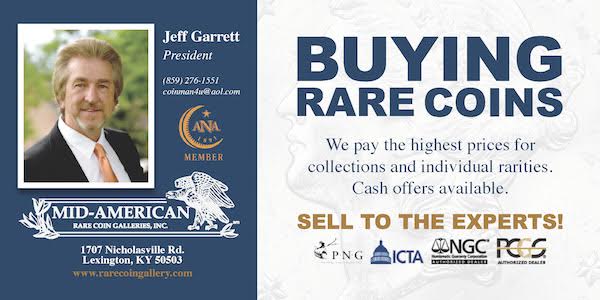
PAUL HILL & CAROLINE HOLMES JOIN CNG
Classical Numismatic Group has added two new staffers to their London office. Here's the press release. -Editor
Classical Numismatic Group, LLC of Lancaster, Pennsylvania and London, England, is pleased to announce that Paul Hill and Caroline Holmes have both joined the firm as of November 1st. Paul and Caroline will be based out of CNG’s London office, and will be working with customers and consignors to secure, catalogue, and process coins coming through the London office.
Eric McFadden, who will continue as Senior Director in London, noted that “Caroline and Paul will already be familiar faces to many of our clients who have had dealings with Spink, Baldwin’s, or Sovereign Rarities over the years. Paul and Caroline are both not only top level professionals but also a pleasure to work with, and we are delighted that they will be joining us in the London office.”
“The addition of Paul and Caroline brings us ever closer to the vision we have for the transition to allow Eric and Victor (England) to work almost exclusively with customers and consignors,” stated Mike Gasvoda, Managing Director of CNG, LLC. “I couldn’t be more pleased to make this announcement as Paul and Caroline both embody the commitment to integrity that CNG is known for, and they have a true passion for their work. They will fit into our staff seamlessly, and we are all excited to have them come on board.”
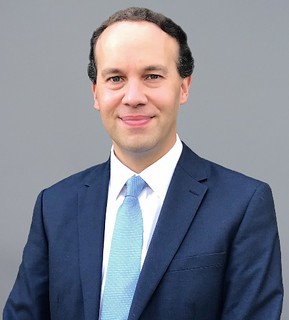 Paul Hill has worked as a professional numismatist for twenty years, and specializes in classical coins from the ancient Greek, Roman and Byzantine periods and their
related fields. During his career, he has managed the ancient coin departments at both Spink & Son and A.H. Baldwin & Sons, buying and selling coins, and producing catalog
descriptions for fixed price lists and auction catalogs.
Paul Hill has worked as a professional numismatist for twenty years, and specializes in classical coins from the ancient Greek, Roman and Byzantine periods and their
related fields. During his career, he has managed the ancient coin departments at both Spink & Son and A.H. Baldwin & Sons, buying and selling coins, and producing catalog
descriptions for fixed price lists and auction catalogs.
He was responsible for securing and cataloging the legendary Prospero Collection, one of the greatest sales of ancient Greek coins ever sold at auction and which established the world record price of $3,802,500 for an ancient coin. He is a fellow and former council member of the Royal Numismatic Society, a member of the British Numismatic Society, the American Numismatic Society, and the American Numismatic Association. He holds a first class Honors Degree and a Master’s Degree in Ancient History from the University of London. Paul is a regular attendee at international numismatic conventions and major auctions and welcomes enquiries from anyone interested in classical numismatics.
 Caroline Holmes specializes in numismatic books and literature and has worked in the numismatic world for fifteen years. She graduated from the University of
Southampton with a degree in History of Art and gained her Master’s degree in the same subject from Royal Holloway University. She began her career in the
coin department of Spink & Son, and while there made the transition to their numismatic book department. Caroline then went on to join A. H. Baldwin & Sons to launch
a book department and during her time there developed a comprehensive stock of both second hand and antiquarian numismatic titles, while also contributing to their regularly
issued fixed price lists.
Caroline Holmes specializes in numismatic books and literature and has worked in the numismatic world for fifteen years. She graduated from the University of
Southampton with a degree in History of Art and gained her Master’s degree in the same subject from Royal Holloway University. She began her career in the
coin department of Spink & Son, and while there made the transition to their numismatic book department. Caroline then went on to join A. H. Baldwin & Sons to launch
a book department and during her time there developed a comprehensive stock of both second hand and antiquarian numismatic titles, while also contributing to their regularly
issued fixed price lists.
Caroline was responsible for the sale of the Prospero Library relating to ancient Greek coins, and more recently cataloged the extensive Ratto Family Library for auction. She attends many of the major coin fairs, both in the U.K. and overseas, and is always happy to discuss numismatics with collectors. She currently serves on the council of the British Numismatic Society.
Caroline is a longtime E-Sylum subscriber. We had a chance to meet in 2007 when I was working in London (see my London Diary, linked below). She was with Baldwin's at the time. Congratulations and good luck to both Caroline and Paul on their new positions. -Editor
To read the earlier E-Sylum article, see:
WAYNE'S LONDON DIARY 17 JUNE, 2007 (http://www.coinbooks.org/esylum_v10n24a16.html)

HARVEY STACK'S NUMISMATIC FAMILY, PARTS 28-29
Harvey Stack's blog series focuses on growing up in a numismatic family. Here are parts 28 and 29. Nothing beats a report on numismatic events and personalities direct from someone who was there to witness them in person. Thanks, Harvey! -Editor
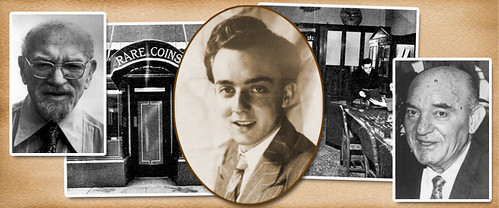
Part 28
As we closed out the 1950s, Stack’s continued to benefit from the relationships we had built in our more than a quarter of a century as coin dealers. Collectors who had
built collections in part by buying or bidding through Stack’s thought of us when it was time to sell. Another sale of note that we offered in 1959 was the famous Phillip
Straus Collection. Straus was a close friend of Louis Eliasberg, Sr. Louis Eliasberg helped Phillip Straus develop his collection and they sold to or traded with each other as
collector friends. We provided many of the coins, and when Strauss decided to retire from his banking business he asked Eliasberg what he should do. Eliasberg told him since there
were no members of his family interested to collecting, he should call up Stack's and have them auction the coins. With this recommendation, together with our own great
relationship with Mr. Straus, we got this sale. It was a great collection of Mint State coins and early Proof sets from 1858 on, and because of its quality, it attracted hundreds
to participate in the public auction.
During the fall of 1959 we sold the Thetford Collection, then the Wilson Reuter Collection and the Powers Collection. Each of the sales was chock full of high quality coins, rare dates and very desirable specimens in both Mint State and Proof condition. Numismatics was so popular at the time and the Stack’s auctions were so well received that collectors used to write to us asking when our next sales were and what would be included. We were fortunate to be able to offer many, many items that were on collectors’ want lists. Our clients all realized that these collections had been built years before, and that the coins were above average.
We also used our subsidiary firm Coin Galleries to sell many of the collections we were consigned that included Ancient coins, as well as world coins up to and including the modern era. Coin Galleries offered primarily mail bid sales.
At the same time that we were offering these important auctions, the growth of numismatics in the late 1950s meant that Stack’s in New York City grew as a hub for both collectors and dealers. Many of the items that our clients couldn’t find in our auctions, we were able to acquire for them in our retail shop. We were very busy, but with all five members of the Stack family working day and night, we were able to keep up the pace and meet our clients’ needs. Of course, this kind of success attracted more collectors, and we got busier and served even more people. It was an exciting year.
However, while all this growth in the hobby was very good, there was still an ongoing problem with more counterfeits on the market, especially within the gold coin series. The Secret Service did their best, but they did not have enough staff to apprehend all the dealers and importers who were buying these false coins overseas and marketing them in the United States. Stories about counterfeits appeared in various periodicals and newspapers. We heard that several good friends of President Eisenhower bought some counterfeit coins and complained to the president that the Secret Service was not doing its job. Eisenhower directed the Treasury Department, who was entrusted with policing our coinage -- old as well as current -- to investigate and put this abuse to an end.
During 1959 the Treasury took on the challenge of trying to stop the flow of counterfeit coins. They initiated the Office of Silver and Gold Operations, with Leland Howard as director. Howard had experience in this work as at the end of World War II, he and others were in charge of inventorying the gold coins stored by the Germans and Italians which had been taken from banks, museums and mints they overran. When these plundered stores were found, someone had to inventory them. That is how Leland Howard got his reputation and appointment to the Office of Silver and Gold Operations. It took well over a year, until 1960-1961, for regulations to be put in place and for strong action to be taken. The story of how the Treasury Department took on the counterfeiters will be explained in my story covering my experiences in 1960.
Part 29
The year 1960 was another exciting year for my cousins, Ben and Norman, and me. We were all dedicated to growing as professional numismatists, building the hobby and keeping the
company successful.
Each of us was responsible for running our parts of the operation. The shop on West 57th Street was the headquarters where the major work happened or was initiated. The shop, which I managed, was the location for much buying and selling of coins and currency of the United States and the world. It was also a place for collectors who visited New York to stop in, talk coins, and get further involved in numismatics. I was also one of the auctioneers for our public sales and when called upon I traveled to visit clients, and attended shows nationwide. I got satisfaction from helping the collectors I worked with.
My cousin Norman was very happy with the job of researching and cataloging. He would sit in our back office (at a “partner” desk that I shared with him), and sort through collections, research the coins being sold at auction or over the counter, and write extensive catalogs, in cooperation with my father, Morton. However, many were the times when both Ben and I would pitch in to "get the catalogs in the mail” as these catalogs were sent out at least eight times each year. We wanted to make sure collectors had ample time to review the offerings, submit bids, come to the shop to see the coins and attend our sales.
Ben, loved to travel and he attended many shows all over the country. He also visited many collectors and built relationships with them. His focus while on the road was buying and selling and gathering consignments for our auctions. With the many Stack family members involved we operated at "full steam.” Joseph B. (Ben and Norman's dad) worked in the shop greeting and dealing with the many who visited us and liked to talk to the "senior Stack." My dad, Morton, was also available to welcome collectors who visited and took his turn tending the counter, along with his cataloging duties.
In this way the family developed many collections, helped collectors who needed assistance, and became friends with those who visited. We had an advantage over dealers with smaller staffs, as they could not necessarily provide the same level of customer service. We also were able to offer a full-service numismatic experience, as we were a retail company and an auction house all in one.
Not every auction was a "name sale," as we were also committed to serving smaller consignors. In that situation we would merge collections and create sales that almost always offered something for everyone. Most of our auctions contained gold, silver and copper coins of the United States, but several times a year we featured Ancient and world coins and currency for our consignors and collectors whose interest was in those areas.
In 1960, among sales of United States coins, we had the following important collections: James Spaulding White, Charles Neumoyer, and Milton H. Holmes all of which were comprehensive collections of U.S. coins. The feature sale of 1960 was the Fairbanks Collection. an outstanding cabinet of U.S. silver dollars, starting in 1794 and with many varieties and choice pieces. Featured was the R. Coulton Davis 1804 dollar. Our auction business was very successful and collectors looked forward to what we would offer next. The above collections had been assembled over at least two decades, most over a time span much longer than that.
One of the great opportunities I was given was direct involvement in building the Josiah K. Lilly Collection of gold coins, which was started in 1951 by Joseph and Morton. Much of this project was turned over to me, as both of these older Stacks were not well enough to travel and make the personal deliveries that were required several times a year.
While there were many positive things happening in 1960 at Stack’s and within the hobby, there was still an epidemic of counterfeits flooding the American market, discouraging many who wanted to begin collecting or add to their holdings. The counterfeiting affected ancient and world coins, but also coins of the United States. After World War II many United States coins that had been held in banks, museums and vaults in Europe came out of storage and returned to the United States. However, counterfeiters took advantage of this market and started to make copies of United States as well as world coins of lower carat gold. They would sell these on the U.S. market and make a profit, even selling them at prices that were less than for genuine gold coins.
Because of the intensity of the problem, President Eisenhower signed a restriction on importing gold coins from outside of the United States without them being examined and determined to be genuine. This was to go into effect immediately. He activated the Office of Gold and Silver Operations and ordered custom houses to stop all shipments of gold coins and have them examined by members of the Secret Service. The leadership of the Office of Gold and Silver Operation was turned over to Dr. Leland Howard, a longtime member of the department, who allegedly knew about gold coins. As most shipments at that time came through the Post Office, they were directed first to the examiners before they were delivered. This sudden restriction on imports discouraged many collectors from trying to get coins from overseas sources and made it more of a hardship to add to collections and inventories.
To read the complete articles, see:
Harvey Stack Remembers: Growing up in a Numismatic Family, Part 28 October 2, 2018
(http://www.stacksbowers.com/News/Pages/Blogs.aspx?ArticleID=3125)
Harvey Stack Remembers: Growing up in a Numismatic Family, Part 29 October 16, 2018
(http://www.stacksbowers.com/News/Pages/Blogs.aspx?ArticleID=3142)
To read the earlier E-Sylum article, see:
HARVEY STACK'S NUMISMATIC FAMILY, PART 27 (http://www.coinbooks.org/v21/esylum_v21n39a14.html)

ANS EXHIBITS MEDALLIC ART COMPANY ARCHIVES
Len Augsburger submitted this note about a new exhibit at the ANS in New York, with images courtesy ANS photographer Alan Roche. Thanks. -Editor
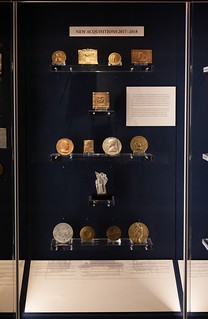
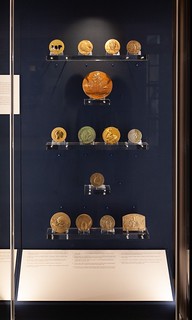
The American Numismatic Society (ANS) this week mounted an exhibit in the ANS foyer, displaying select examples from the recently acquired MACO archives. Per the exhibit,
“In 2018, the ANS acquired the archives of the Medallic Art Company (MACO), a collection of more than 50,000 items of historic and numismatic significance. MACO was founded in New York City around 1909 as a private mint producing medals and galvanos by some of the most prominent American sculptors of the twentieth century. The ANS acquired the archives as part of the bankruptcy proceedings of the Northwest Territorial Mint in a bid to preserve the heritage of the important mint and make available its archives for future study and research.
This exhibit represents a small assortment of the medals from this acquisition. From the artistic to the industrial, MACO medals display a vast array of styles as well as subject matter. The medals here illustrate a cross-section of this collection from the company’s Beaux-Arts beginnings to the Modernist art medals of the 1960s, and from more intimate portraits to corporate awards.”
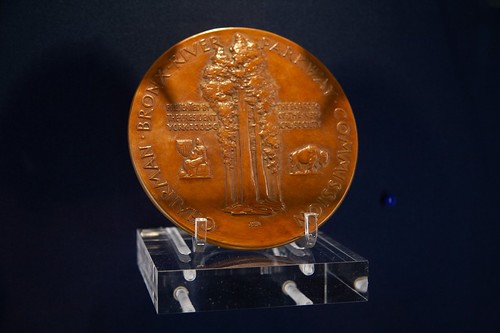
Illustrated here are the two exhibit cases, including a New York Zoological Society Madison Grant Medallion, a 1931 bronze medal by John R. Sinnock.
NUMISMATIC NUGGETS: OCTOBER 21, 2018
Here's a selection of interesting or unusual items I came across in the marketplace this week. Tell us what you think of some of these. -Editor
Victorian-Era Communion Token Collection
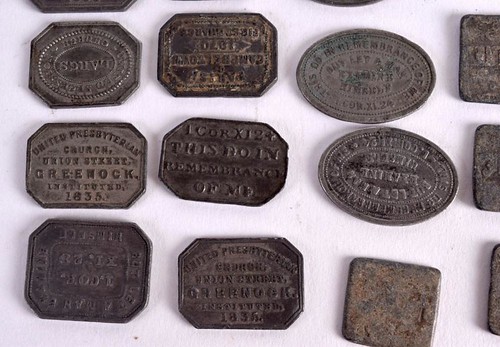
A COLLECTION RARE VICTORIAN CHURCH TOKENS in various forms and sizes. (qty)
Communion tokens are a great collecting specialty with a long numismatic tradition. They're mostly inexpensive and all fascinating to research. -Editor
To read the complete lot description, see:
A COLLECTION RARE VICTORIAN CHURCH TOKENS in various forms and sizes. (qty)
(https://www.invaluable.com/auction-lot/-1-c-8224FF184A)
Wilhelm I SIlver Award Medal
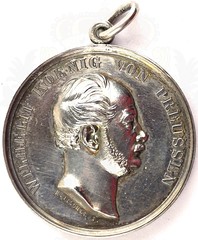
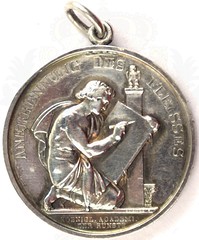
Description: Small Premium Medal
KLEINE PRÄMIENMEDAILLE
KLEINE PRÄMIENMEDAILLE, der Königlichen Akademie der Künste, Silber, m. Portrait König Wilhelm I., sign. „K. Fischer F.“, rs. kniehender Knabe m.
Schreibtafel vor Säule, sign. „Goetze“, Umschrift „Anerkennung des Fleisses“, Ø 33mm, 23gr., tragbar, Band fehlt
Nice silver medal. I was attracted by the high relief of the obverse, but really like the artist-in-action view on the reverse. Here's the Google translation to English. -Editor
Description: Small Premium Medal SMALL AWARD MEDAL SMALL AWARD MEDAL, the Royal Academy of Arts, silver, m. Portrait of King Wilhelm I, sign. "K. Fischer F. ", rs. Kneeling boy m. Writing board in front of pillar, sign. "Goetze", inscription "appreciation of the diligence", Ø 33mm, 23gr., Wearable, volume missing
To read the complete lot description, see:
Lot 1781: Small Premium Medal - KLEINE PRÄMIENMEDAILLE
(https://www.invaluable.com/auction-lot/-1-c-A88498987C)
Directors Guild of America Medal
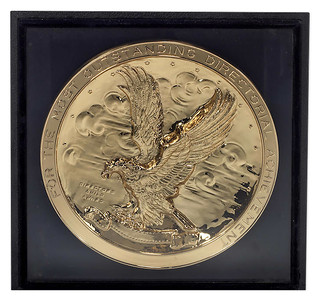
Directors Guild of America medal awarded to Sir Richard Attenborough for Most Outstanding Directorial Achievement. Attenborough both produced and directed ''Gandhi'', the 1982 film which also won 8 Academy Awards including Best Picture, Best Director, Best Actor and Best Screenplay.
Large and impressive medal features a relief portrait of an eagle clutching a strip of celluloid. Gusts of wind are depicted in the background and ''DIRECTORS GUILD AWARD'' appears beneath the eagle's beak. Written on the border are the words, ''FOR THE MOST OUTSTANDING DIRECTORIAL ACHIEVEMENT''. Measures 10'' in diameter. Comes housed in black 13'' x 13'' case with felt border and glass window. Medal and case weigh 13 lbs. 10 oz. Lustrous gold tone medal is in near fine condition.
What a trophy! Offered at auction last month at a minimum bid of $12,000, it didn't sell, but is still available for purchase at that price. The reverse is not pictured. At 10" across, this may be more of a plaque than a medal. Impressive nonetheless. Would anyone know who designed and made it? -Editor
To read the complete lot description, see:
Richard Attenborough's Directors Guild Award From 1982 for Most Outstanding
Directorial Achievement for the Classic ''Gandh (https://natedsanders.com/Richard_Attenborough_s_Directors
_Guild_Award_From_-LOT50340.aspx)
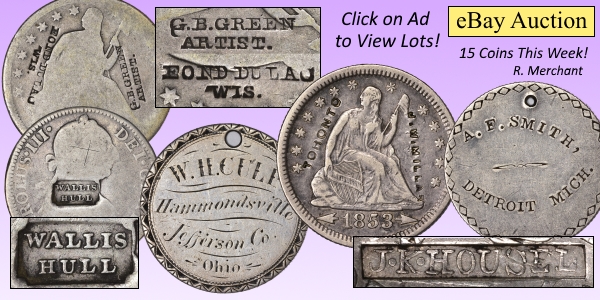
APOLLO 11 COIN DESIGNER GARY COOPER
Local newspapers are a great source for information on coin artists. A Bangor, ME publication interviewed Apollo 11 coin designer Gary Cooper. -Editor
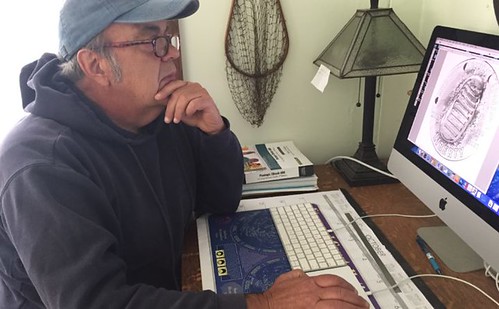
Gary Cooper of Belfast was just a teenager on July 20, 1969, when he watched, transfixed, as Apollo 11 astronaut Neil Armstrong took his historic first step on the moon.
“The whole world had joy over it,” the graphic artist and sculptor said this week, wiping tears from his eyes at the powerful memory. “That footprint wasn’t Armstrong’s footprint — it was everybody on Earth’s at the time. I remember the moment. We actually landed on another world.”
So when the U.S. Mint announced a competition to design a commemorative coin to mark the 50th anniversary of the Apollo 11 mission, Cooper knew right away what his entry would be. Last week, officials at the Mint announced that his sculpted design of the photograph of Armstrong’s footprint in the lunar dust would be featured on the special coins.
For the Maine artist, it isn’t just an ordinary commission, but rather an honor and the culmination of a lifelong dream.
“I’ve been a coin collector ever since I was 11 years old,” he said. “From an early age I dreamed of doing a design for a U.S. coin.”
Cooper, who believes he was named after the actor although his mother always denied it — “I was born the year “High Noon” came out,” he said — first started trying to achieve that dream when he was in high school in Greenwich, Connecticut. That’s when he wrote a letter to the director of the U.S. Mint, offering to help design the Eisenhower dollar coin.
The director did write back, although he politely declined the teen’s offer. But Cooper, who moved to Maine in 1988, was undaunted. For the past 20 years, he has submitted designs to the Mint in hopes that one would be chosen for the Sacagawea dollar, the Maine state quarter and others.
But none made the cut. That changed last November, when he received the news he has been waiting many years to hear.
It seemed impossible.
“I didn’t really believe it,” Cooper said.
But it was true. The design he had toiled over for many hours using a 3D design program on his computer would make its way to the obverse side of four coins: a $5 gold coin, a standard-size $1 silver coin, a half dollar clad coin and a 5-ounce, heavier-than-usual $1 silver proof coin.
“It was a delight to see him finally get one,” his wife, Marcia Cooper, said, adding that not everyone understands how hard it is to sculpt a lifelike 3D design on the computer. “What people don’t realize is that you don’t just push a button. It’s literally placing each pixel in position. It’s excruciating and painstaking.”
Cooper has used the process before to sculpt memorial plaques that hang in the Maine State House Hall of Flags and to honor Maine female veterans, Maine Vietnam veterans, Maine Korean veterans and Maine World War II veterans.
After the design is done, a precision model is created using a computer numerical control, or CNC, machine. This is essentially what will happen with the U.S. Mint coin design, too, with the first coins scheduled to go on sale at noon Jan. 24, 2019. The Mint will announce the coin prices ahead of the sale date.
To read the complete article, see:
Maine artist’s Apollo 11 design will be on special
US coins (https://bangordailynews.com/2018/10/16/news/midcoast/maine-artists-apollo-11-design-will-be-on-special-us-coins/)
WAYNE'S NUMISMATIC DIARY: OCTOBER 21, 2018
The previous article on Apollo 11 coin designer Gary Cooper makes a nice segue for my diary this week. I had a great conversation Monday night about that very coin. I had been invited to dinner by my friend Tom Uram. I met him at the Monacle restaurant on Capitol Hill, across the plaza from Washington, D.C.'s Union Station.
Tom was in town for his duties as a member of the Citizen's Coinage Advisory Committee (CCAC). With us at dinner were Tom's fellow CCAC members Mary Lannin, Jeanne Stevens-Sollman, Heidi Wastweet, Mike Moran, Erik Jansen as well as Tom's brother Jim and writer Lou Golino.
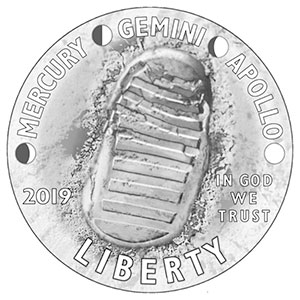 I had met everyone previously and it was a pleasure to join them again. I sat next to Jeanne and specifically asked about that coin. I had just come across images of the
"big footprint" design in the numismatic press and wondered how it would look executed on a coin. Looks can be decieving. A design that looks great on paper can be a dud
when translated to the 3-D surface of a coin, and similarly, what might look like a horrible design on paper can turn out stunning in person.
I had met everyone previously and it was a pleasure to join them again. I sat next to Jeanne and specifically asked about that coin. I had just come across images of the
"big footprint" design in the numismatic press and wondered how it would look executed on a coin. Looks can be decieving. A design that looks great on paper can be a dud
when translated to the 3-D surface of a coin, and similarly, what might look like a horrible design on paper can turn out stunning in person.
I was afraid the coin will be a dud. That big footprint looked ugly. I totally got the symbolism, but feared it would make an awful coin. But this is why we have Honest-to-God sculptors like Heidi and Jeanne on the committee. Jeanne counted off the reasons for me why she thought the design could come through as a stunning coin. Now I can't wait to see one in person.
Jeanne happend to have with her a number of her own medals and I really enjoyed looking them over. Here are some of them arrayed on our table.
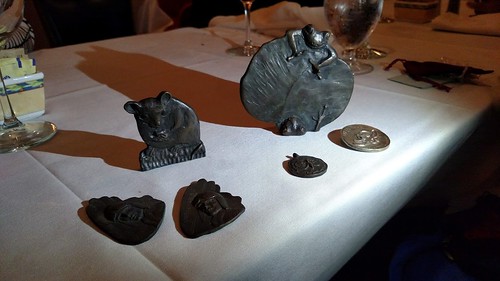
Jeanne kindly followed up with better images so I could share them with E-Sylum readers.
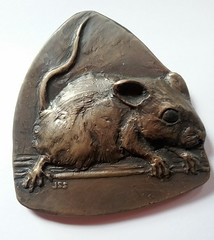
mouse run run far away
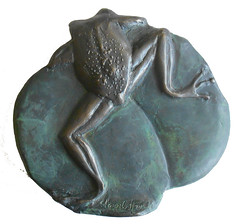
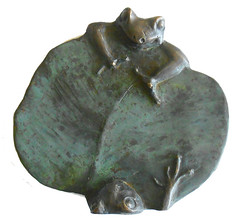
If you build a wall, we will find a way
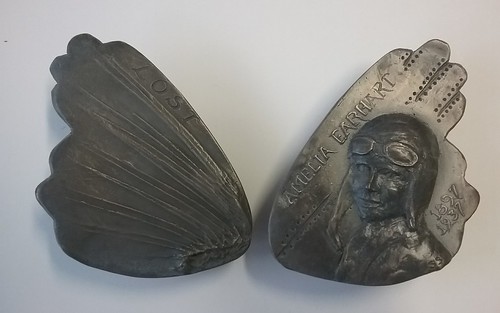
Amelia Earhart

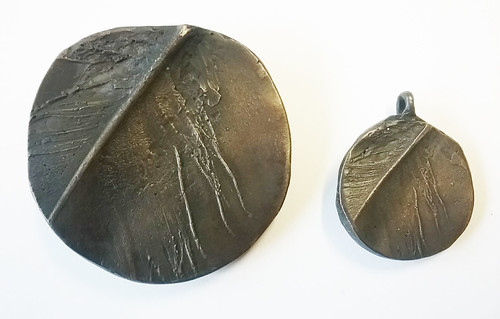
Archimedes study large and small
I thanked Jeanne, Mike and other CCAC members in earshot for their recent unanimous decision to not consider an entire set of designs for the American Innovations series. I agreed that the submissions were universally bad. The committee should never be shy about doing their job. It's an important one, and I'm glad we have such a smart, high-powered group reviewing our coin designs.
I also thanked Heidi for her recent audio interview with CoinWeek. I thought she did a super job explaining the workings of CCAC and the complex decisions involved.
Afterwards Lou Golino and I discussed the difficulty of coming up with ideas for the Innovations series. These can be tough to visualize, so it's not surprising the first round went badly.
Dinner conversation wasn't all about coins and art - topics at my end of the table were all over the map, from weather to travel to children and injuries old and new. I had a great steak for dinner. I even took a picture of it, but I'll spare you the image. When the dessert menu came out Mary asked me, "What are you getting?" "FAT!", I said, as I tried to order chocolate cake only to learn they were sold out. But they gave Jeanne and I a free slice of cheesecake to share as a consolation prize.
After dinner I gave Lou a ride in my car over to the Metro stop at Union Station. He was heading home to suburban Maryland, and I was going to suburban Virginia. It was another great evening of numismatic fellowship, something that makes this hobby of ours so great.
See the Loose Change article later in this issue for links to articles by Lou Golino or relating to the CCAC.
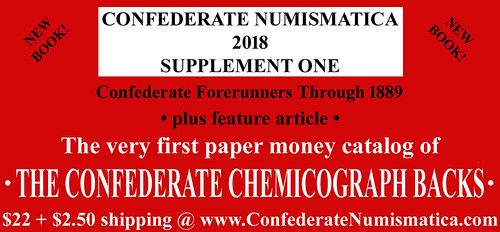
KING OFFA'S ARABIC COIN
A new British Library exhibition features an unusual coin of medieval King Offa featuring an Arabic inscription. We'd mentioned this piece in an E-Sylum article back in 2011. Here's an excerpt from an October 19, 2018 Daily Star article. -Editor

King Offa's coins featured the Islamic declaration 'No God but Allah'
King Offa of Mercia, who reigned between 757AD and 796AD, minted hundreds of Gold dinars featuring his name and the Islamic declaration of faith.
He is widely considered the most powerful Anglo Saxon king before the Alfred the Great as his rule at different points extended outside of Mercia (the Midlands) into kingdoms such as Kent, Sussex and Wessex.
And the Christian ruler sought to trade with Europe and the Mediterranean including the then Muslim-controlled Spain, which explains the coinage.
Dr Alison Hudson, co-curator of the new British Library exhibition, said: “The Anglo-Saxon moneyer who made this coin clearly did not understand Arabic.
“The Arabic inscription is upside down in relation to Offa’s name, and there is abundant evidence Offa was Christian, not Muslim.
“In fact, this gold coin might have been one of 365 gold coins Offa reportedly sent to the pope in Rome.
“Nevertheless, the coin shows the importance and influence of trade links between the Anglo-Saxon Kingdoms, the Mediterranean and beyond in this period.
“Offa may have chosen to mint gold coins because the gold dinar was the dominant coinage in the Mediterranean in this period.
“Moreover, al-Mansur’s dinar seems to have arrived in the Anglo-Saxon kingdoms and inspired Offa’s coins within a few decades—and possibly within a few years – after it was minted in AD 773-74, which also attest to the relative speed with which these trade networks connected the far northwest of Europe to Mediterranean and even Baghdad.
“Trade and cultural links with the Mediterranean, the European continent and beyond were important throughout the Anglo-Saxon period.”
The only surviving coin is part of a huge selection of artefacts at a major new exhibition – Anglo Saxon Kingdoms: Art, Word, War – which opened today at the British Library in London.
To read the complete article, see:
Medieval British king had ARABIC
gold coins praising Allah (https://www.dailystar.co.uk/news/latest-news/737497/medieval-king-offa-coins-arabic-writing-allah-british-library-anglo-saxon-exhibition)
To read the earlier E-Sylum article, see:
FEATURED WEB PAGE: THE TALE OF OFFA AND THE ARABIC COIN (http://www.coinbooks.org/esylum_v14n34a30.html)
THE ANA JOHN F. KENNEDY COLLECTION
An October 17, 2018 article on the American Numismatic Association blog highlights the ANA's collection of items relating to President John F. Kennedy. Here's an excerpt. See the complete article online for more information. -Editor
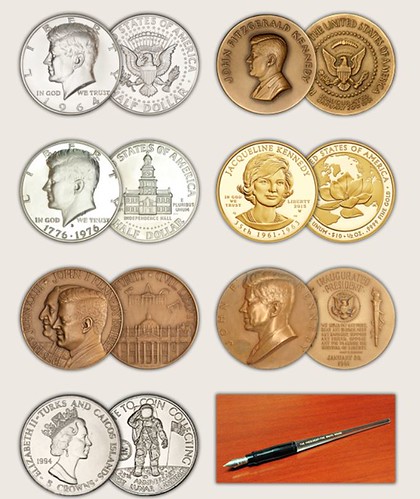
When John F. Kennedy was assassinated on November 22, 1963, U.S. Mint Director Eva Adams proposed issuing a coin to commemorate the fallen President. Under existing law, coin designs could not be changed more frequently than every 25 years, and the Franklin half dollar had only been minted for 15 years. Nonetheless, Congress passed an act authorizing the Kennedy half dollar on December 30, 1963. Designed by Mint Chief Engraver Gilroy Roberts, production of the coin commenced in 1964 and it remains the standard design for half dollars produced by the U.S. Mint.
The ANA has its own special connection to Kennedy: in 1912, President William H. Taft granted the ANA a federal charter, which was revised and made permanent by President Kennedy in 1962. The pen he used to sign the charter into law is in the Money Museum's collection.
It's a fine collection of high-grade, mostly common items. But this one knocked my socks off - Kennedy's Purple Heart! Wow - how did that come to rest at the Edward C. Rochette Money Museum? -Editor

To read the complete article, see:
Tales from the Vault: John Fitzgerald Kennedy (https://www.money.org/ana-blog/kennedy)
THE 1887 INTERNATIONAL MEDICAL CONGRESS MEDAL
Manuel A. Galguera of Miami, FL submitted this article about the International Medical Congress Medal. Thank you. -Editor
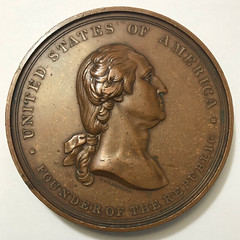
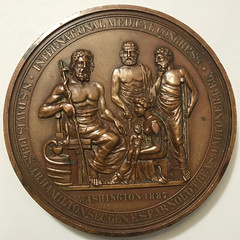
Charles E. Barber (1840-1917) was a master steel engraver and the sixth Chief Engraver of the U.S Mint in Philadelphia. He designed more United States coins and medals than any other artist.
Among coin collectors and numismatists, Barber is best known for his 1892 to 1916 series of dimes, quarters and half dollars, caller the “Barber Head” coins, but also he is recognized by his Medals designed and engraved. Among the medals designed by Barber on occasion of special events of the country is the “1887 International Medical Congress Medal” (Bronze, 76 mm). The obverse, the bust of George Washington with the inscription: UNITED STATES OF AMERICA/FOUNDER OF THE REPUBLIC. On the reverse: INTERNATIONAL MEDICAL CONGRESS/N.S. DAVIS PRES. J. B. HAMILTON, SEC GEN E.S.F. ARNOLD, TREAS. J. M. TONER, REG/ WASHINGTON 1887.
The group of figures on the reverse of the medal is intended to symbolize medicine. Asclepius, a god of medicine in ancient Greek religion, is here represented as a noble and venerable form, draped in classic costume, seated, holding his staff entwined by a serpent, and attentively examining a sick child, being held on his mother’s lap, who is seated on a low stool. Two men are represented as standing soliciting the services of the physician, one with a staff and bandaged head, the other supporting himself upon a crutch. (1)
The Congress was the ninth celebrated in United States with the participation of American and foreign doctors who met in Washington D.C. to share their experiences and treatments of different diseases, the medal that was engraved in the U.S. Mint was sold to all participants at a cost of 5 dollars.(2)
References:
1.-Toner, J.M. History of the medal on the ninth international medical congress. JAMA, December 15, 1888, p. 851
2.-Journal of American Medical Association. July 30, 1887, p. 159
COIN CARVER ROMAN BUTIN'S NEW DESIGN
Russian coin carver Roman Butin has produced another great design. Ed Hohertz writes, "This is one I would like to see the mint make." Check out the video, linked below. -Editor

The face of this 1921 silver dollar has been carved to depict some kind of scene (not sure what it is) and it includes an ingenious mechanical surprise.
To read the complete articles, see:
You need to check out this really cool coin that has an amazing hidden feature
(https://mashable.com/article/roman-booteen-coin-hidden-feature/#C5mVhb9DZaqj)
This carved silver dollar has a surprise
(https://boingboing.net/2018/10/16/this-carved-silver-dollar-has.html)
To read the earlier E-Sylum article, see:
ARTICLE PROFILES COIN CARVER ROMAN BUTIN (http://www.coinbooks.org/v21/esylum_v21n28a28.html)
LOOSE CHANGE: OCTOBER 21, 2018
Here are some additional items I came across in the media this week that may be of interest. -Editor
The Future of American Silver Eagles
Here's an earlier CoinWeek article by Lou Golino on the future of the American Silver Eagles, -Editor
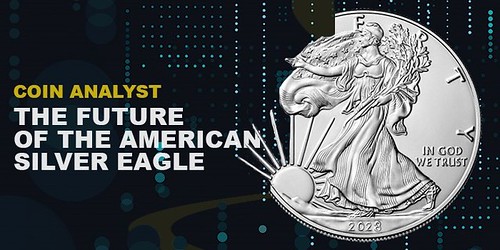
To read the complete article, see:
The Coin Analyst: The Future of American Silver Eagles – Continuity vs.
Change (https://coinweek.com/us-coins/the-future-of-american-silver-eagles-continuity-vs-change/)
Apollo 11 Coin Designer Interviewed
In a great Coin Update article, Lou Golino examnes the new Apollo 11 coin designs and interviews the designer. -Editor
On October 11 at the National Air and Space Museum of the Smithsonian Institution in Washington, DC, the designs of the 2019 Apollo 11 50th anniversary commemorative coins were unveiled with considerable fanfare by the U.S. Mint’s Director David Ryder and officials from the space community.
The designs — an obverse showing Neil Armstrong’s boot print as he made his first steps on the lunar surface, and a reverse based on the famous photo of Buzz Aldrin on the moon that features his helmet visor with a reflection of Neil Armstrong, the U.S. flag, and the lunar module — were received enthusiastically by those in attendance.
The launching of these designs took place more than four years after the idea of an Apollo 11 commemorative program was first proposed by Michael Olson, then a member of the Citizens Coinage Advisory Committee in February 2014.
To read the complete article, see:
2019 Apollo 11 coin designs take flight four years after program
proposed (http://news.coinupdate.com/2019-apollo-11-coin-designs-take-flight-fours-years-after-program-proposed/)
CCAC First Amendment Designs
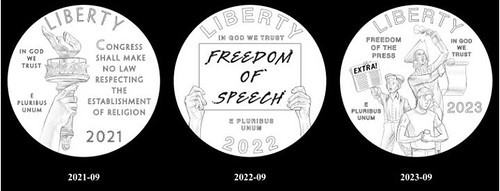
To read the complete article, see:
CCAC October 16, 2018, meeting: First
amendment designs for the 2021-2025 American Platinum Eagle coin series
(http://mintnewsblog.com/ccac-october-16-2018-meeting-first-amendment-designs-for-the-2021-2025-american-platinum-eagle-coin-series/)
CCAC Reviews Military Medal Designs
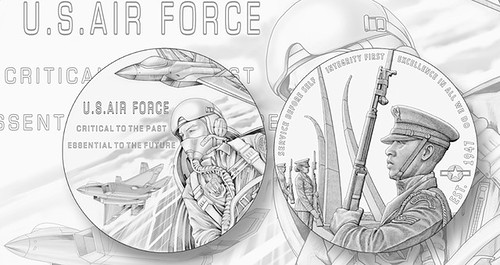
To read the complete article, see:
CCAC begins review of military medals designs
(https://www.coinworld.com/news/us-coins/2018/10/ccac-selected-designs-for-silver-coast-guard-and-air-force-medals.html)
FEATURED WEB SITE: FORUM ANCIENT COINS
This week's Featured Web Site is suggested by David Pickup. Thanks.These pages are .....
These ancient coin pages were inspired by the many excellent web sites about ancient coins. It would be foolish to try to match them. The best of them are way beyond my capability
and resources, and why would I want to achieve a pale shadow of the best? I have listed a few sites which I think are particularly useful or interesting on my Useful Links
page.
Instead, my own pages cover some subjects which interest me and were fun to put together. So, they might be interesting and fun for others, too.
What I Like
What do I like about ancient coins? I like their feeling of bringing history to life. I like their language of imagery, so different from ours that it gives me the feeling of
being in a different world - look at the two coins I put right at the top, representing aggression and agriculture, therefore war and peace. I like the way I have to learn great
chunks of history to find out about their context, and it's living history, not just reams of dates like the history lessons I had at school. I like the way they tell stories
and send messages. Some of this might be apparent from these pages!
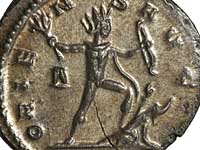
www.forumancientcoins.com/moonmoth/
ancientcoins.html

